AMD A6-5400K vs Intel Core i3-3220: What is the difference?
44points
AMD A6-5400K
36points
Intel Core i3-3220
vs
64 facts in comparison
AMD A6-5400K
Intel Core i3-3220
Why is AMD A6-5400K better than Intel Core i3-3220?
- 9.09% faster CPU speed?
2 x 3.6GHzvs2 x 3.3GHz - 266MHz higher ram speed?
1866MHzvs1600MHz - 4.7°C higher maximum operating temperature?
70°Cvs65.3°C - 110MHz faster GPU clock speed?
760MHzvs650MHz - 0.5MB bigger L2 cache?
1MBvs0.5MB - Has an unlocked multiplier?
- 0.25MB/core more L2 cache per core?
0.5MB/corevs0.25MB/core - Has AES?
Why is Intel Core i3-3220 better than AMD A6-5400K?
- 2 more CPU threads?
4vs2 - 10nm smaller semiconductor size?
22nmvs32nm - 1.
96x higher PassMark result?
4232vs2155 - 10W lower TDP?
55Wvs65W - 32KB bigger L1 cache?
128KBvs96KB - 4.6GB/s more memory bandwidth?
25.6GB/svs21GB/s - 30.45% higher PassMark result (single)?
1765vs1353 - Uses multithreading?
Which are the most popular comparisons?
AMD A6-5400K
vs
Intel Core i5-3337U
Intel Core i3-3220
vs
Intel Core i5-3470
AMD A6-5400K
vs
AMD A10-5800K
Intel Core i3-3220
vs
AMD E1-1200
AMD A6-5400K
vs
Intel Core i5-4670S
Intel Core i3-3220
vs
Intel Core i5-2400
AMD A6-5400K
vs
Intel Core i5-4258U
Intel Core i3-3220
vs
AMD E-300
AMD A6-5400K
vs
Intel Pentium G3220
Intel Core i3-3220
vs
AMD A8-5500
AMD A6-5400K
vs
AMD A4-5300
Intel Core i3-3220
vs
AMD A4-3400
AMD A6-5400K
vs
AMD A8-5600K
Intel Core i3-3220
vs
AMD Athlon II X2 270
AMD A6-5400K
vs
Intel Core i5-2540M
Intel Core i3-3220
vs
Intel Pentium G3220
AMD A6-5400K
vs
Intel Core i5-3470S
Intel Core i3-3220
vs
Intel Celeron 6305
Price comparison
User reviews
Overall Rating
AMD A6-5400K
0 User reviews
AMD A6-5400K
0. 0/10
0/10
0 User reviews
Intel Core i3-3220
3 User reviews
Intel Core i3-3220
6.7/10
3 User reviews
Features
Value for money
No reviews yet
8.0/10
3 votes
Gaming
No reviews yet
5.0/10
3 votes
Performance
No reviews yet
6.0/10
3 votes
Reliability
No reviews yet
9.0/10
3 votes
Energy efficiency
No reviews yet
9.3/10
3 votes
Performance
1.CPU speed
2 x 3.6GHz
2 x 3.3GHz
The CPU speed indicates how many processing cycles per second can be executed by a CPU, considering all of its cores (processing units). It is calculated by adding the clock rates of each core or, in the case of multi-core processors employing different microarchitectures, of each group of cores.
2. CPU threads
CPU threads
More threads result in faster performance and better multitasking.
3.turbo clock speed
3.8GHz
Unknown. Help us by suggesting a value. (Intel Core i3-3220)
When the CPU is running below its limitations, it can boost to a higher clock speed in order to give increased performance.
4.Has an unlocked multiplier
✔AMD A6-5400K
✖Intel Core i3-3220
Some processors come with an unlocked multiplier which makes them easy to overclock, allowing you to gain increased performance in games and other apps.
5.L2 cache
A larger L2 cache results in faster CPU and system-wide performance.
6.L3 cache
Unknown. Help us by suggesting a value. (AMD A6-5400K)
A larger L3 cache results in faster CPU and system-wide performance.
7.L1 cache
A larger L1 cache results in faster CPU and system-wide performance.
8.L2 core
0.5MB/core
0.25MB/core
More data can be stored in the L2 cache for access by each core of the CPU.
9.L3 core
Unknown. Help us by suggesting a value. (AMD A6-5400K)
1.5MB/core
More data can be stored in the L3 cache for access by each core of the CPU.
Memory
1.RAM speed
1866MHz
1600MHz
It can support faster memory, which will give quicker system performance.
2.maximum memory bandwidth
21GB/s
25.6GB/s
This is the maximum rate that data can be read from or stored into memory.
3.DDR memory version
DDR (Double Data Rate) memory is the most common type of RAM. Newer versions of DDR memory support higher maximum speeds and are more energy-efficient.
4.memory channels
More memory channels increases the speed of data transfer between the memory and the CPU.
5.maximum memory amount
Unknown. Help us by suggesting a value. (AMD A6-5400K)
The maximum amount of memory (RAM) supported.
6.bus transfer rate
5.4GT/s
The bus is responsible for transferring data between different components of a computer or device.
7.Supports ECC memory
✖AMD A6-5400K
✖Intel Core i3-3220
Error-correcting code memory can detect and correct data corruption. It is used when is it essential to avoid corruption, such as scientific computing or when running a server.
8.eMMC version
Unknown. Help us by suggesting a value. (AMD A6-5400K)
Unknown. Help us by suggesting a value. (Intel Core i3-3220)
A higher version of eMMC allows faster memory interfaces, having a positive effect on the performance of a device. For example, when transferring files from your computer to the internal storage over USB.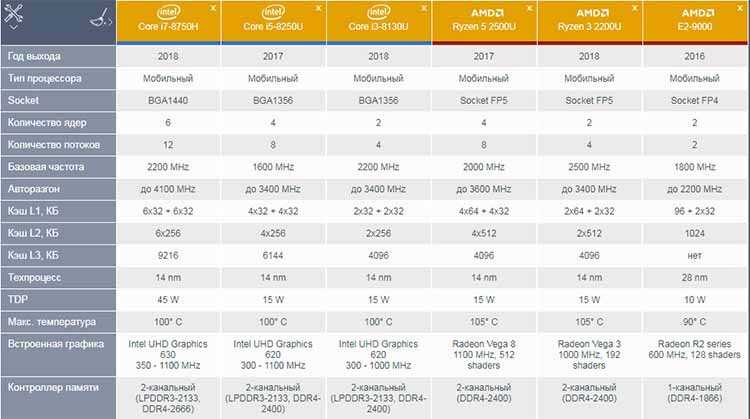
9.bus speed
Unknown. Help us by suggesting a value. (AMD A6-5400K)
Unknown. Help us by suggesting a value. (Intel Core i3-3220)
The bus is responsible for transferring data between different components of a computer or device.
Benchmarks
1.PassMark result
This benchmark measures the performance of the CPU using multiple threads.
2.PassMark result (single)
This benchmark measures the performance of the CPU using a single thread.
3.Geekbench 5 result (multi)
Unknown. Help us by suggesting a value. (AMD A6-5400K)
Unknown. Help us by suggesting a value. (Intel Core i3-3220)
Geekbench 5 is a cross-platform benchmark that measures a processor’s multi-core performance. (Source: Primate Labs, 2022)
4.Cinebench R20 (multi) result
Unknown. Help us by suggesting a value.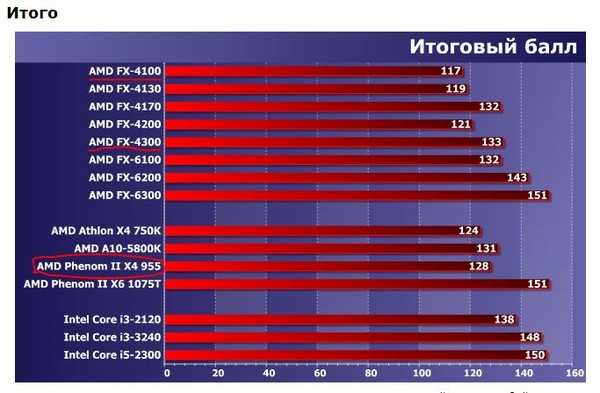 (AMD A6-5400K)
(AMD A6-5400K)
Unknown. Help us by suggesting a value. (Intel Core i3-3220)
Cinebench R20 is a benchmark tool that measures a CPU’s multi-core performance by rendering a 3D scene.
5.Cinebench R20 (single) result
Unknown. Help us by suggesting a value. (AMD A6-5400K)
Unknown. Help us by suggesting a value. (Intel Core i3-3220)
Cinebench R20 is a benchmark tool that measures a CPU’s single-core performance by rendering a 3D scene.
6.Geekbench 5 result (single)
Unknown. Help us by suggesting a value. (AMD A6-5400K)
Unknown. Help us by suggesting a value. (Intel Core i3-3220)
Geekbench 5 is a cross-platform benchmark that measures a processor’s single-core performance. (Source: Primate Labs, 2022)
7.Blender (bmw27) result
Unknown. Help us by suggesting a value. (AMD A6-5400K)
Unknown. Help us by suggesting a value. (Intel Core i3-3220)
(Intel Core i3-3220)
The Blender (bmw27) benchmark measures the performance of a processor by rendering a 3D scene. More powerful processors can render the scene in less time.
8.Blender (classroom) result
Unknown. Help us by suggesting a value. (AMD A6-5400K)
Unknown. Help us by suggesting a value. (Intel Core i3-3220)
The Blender (classroom) benchmark measures the performance of a processor by rendering a 3D scene. More powerful processors can render the scene in less time.
9.performance per watt
This means the CPU is more efficient, giving a greater amount of performance for each watt of power used.
Features
1.uses multithreading
✖AMD A6-5400K
✔Intel Core i3-3220
Multithreading technology (such as Intel’s Hyperthreading or AMD’s Simultaneous Multithreading) provides increased performance by splitting each of the processor’s physical cores into virtual cores, also known as threads.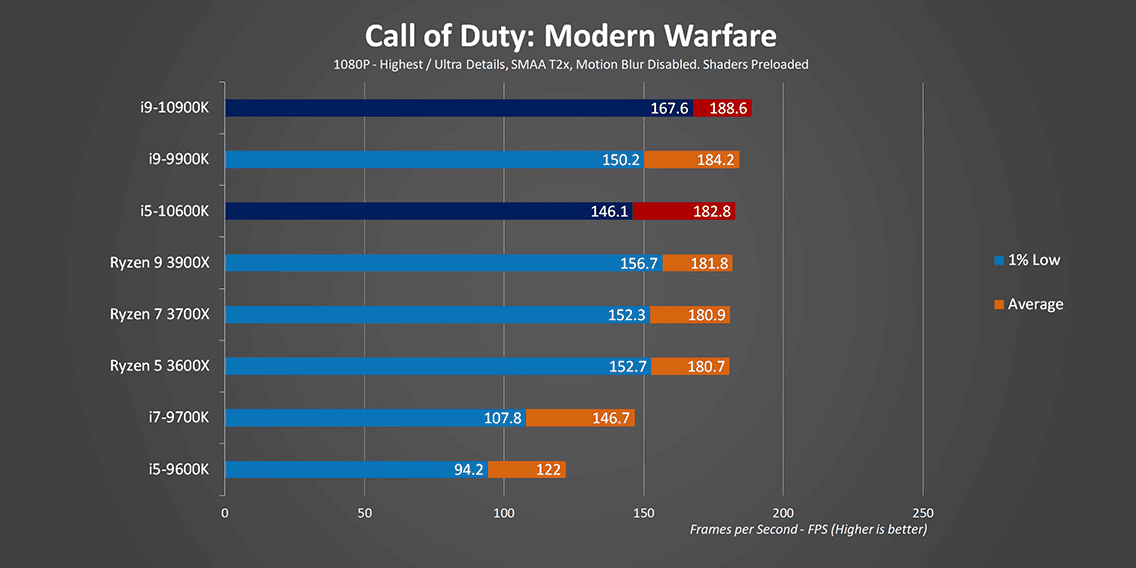 This way, each core can run two instruction streams at once.
This way, each core can run two instruction streams at once.
2.Has AES
✔AMD A6-5400K
✖Intel Core i3-3220
AES is used to speed up encryption and decryption.
3.Has AVX
✔AMD A6-5400K
✔Intel Core i3-3220
AVX is used to help speed up calculations in multimedia, scientific and financial apps, as well as improving Linux RAID software performance.
4.SSE version
SSE is used to speed up multimedia tasks such as editing an image or adjusting audio volume. Each new version contains new instructions and improvements.
5.Has F16C
✔AMD A6-5400K
✔Intel Core i3-3220
F16C is used to speed up tasks such as adjusting the contrast of an image or adjusting volume.
6.bits executed at a time
Unknown. Help us by suggesting a value. (AMD A6-5400K)
Unknown. Help us by suggesting a value.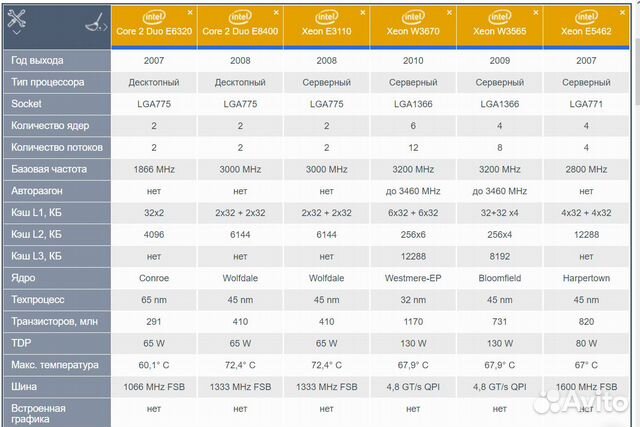 (Intel Core i3-3220)
(Intel Core i3-3220)
NEON provides acceleration for media processing, such as listening to MP3s.
7.Has MMX
✔AMD A6-5400K
✔Intel Core i3-3220
MMX is used to speed up tasks such as adjusting the contrast of an image or adjusting volume.
8.Has TrustZone
✖AMD A6-5400K
✖Intel Core i3-3220
A technology integrated into the processor to secure the device for use with features such as mobile payments and streaming video using digital rights management (DRM).
9.front-end width
Unknown. Help us by suggesting a value. (AMD A6-5400K)
Unknown. Help us by suggesting a value. (Intel Core i3-3220)
The CPU can decode more instructions per clock (IPC), meaning that the CPU performs better
Price comparison
Cancel
Which are the best CPUs?
AMD A6-9225 vs Intel Core i3-1115G4: What is the difference?
35points
AMD A6-9225
56points
Intel Core i3-1115G4
vs
64 facts in comparison
AMD A6-9225
Intel Core i3-1115G4
Why is AMD A6-9225 better than Intel Core i3-1115G4?
- 13W lower TDP?
15Wvs28W - Has FMA4?
Why is Intel Core i3-1115G4 better than AMD A6-9225?
- 15.
 38% faster CPU speed?
38% faster CPU speed?
2 x 3GHzvs2 x 2.6GHz - 1600MHz higher ram speed?
3733MHzvs2133MHz - 2 more CPU threads?
4vs2 - 10°C higher maximum operating temperature?
100°Cvs90°C - 18nm smaller semiconductor size?
10nmvs28nm - 1.5MB bigger L2 cache?
2.5MBvs1MB - 4.79x higher PassMark result?
6401vs1336 - 1GHz higher turbo clock speed?
4.1GHzvs3.1GHz
Which are the most popular comparisons?
AMD A6-9225
vs
Intel Core i3-8130U
Intel Core i3-1115G4
vs
AMD Ryzen 3 3250U
AMD A6-9225
vs
Intel Core i3-7020U
Intel Core i3-1115G4
vs
AMD Ryzen 3 5300U
AMD A6-9225
vs
Intel Core i5-8265U
Intel Core i3-1115G4
vs
AMD Ryzen 5 5500U
AMD A6-9225
vs
Intel Celeron N4020
Intel Core i3-1115G4
vs
Intel Core i5-1135G7
AMD A6-9225
vs
Intel Core i5-10210U
Intel Core i3-1115G4
vs
AMD Ryzen 5 3500U
AMD A6-9225
vs
AMD Ryzen 3 3200U
Intel Core i3-1115G4
vs
Intel Core i5-10210U
AMD A6-9225
vs
AMD Ryzen 5 2500U
Intel Core i3-1115G4
vs
Intel Core i3-1005G1
AMD A6-9225
vs
Intel Core i5-8250U
Intel Core i3-1115G4
vs
Intel Core i3-10110U
AMD A6-9225
vs
Intel Core i5-6200U
Intel Core i3-1115G4
vs
Intel Core i5-8250U
Intel Core i3-1115G4
vs
Intel Core i5-1035G1
Price comparison
User reviews
Overall Rating
AMD A6-9225
2 User reviews
AMD A6-9225
8. 0/10
0/10
2 User reviews
Intel Core i3-1115G4
8 User reviews
Intel Core i3-1115G4
9.5/10
8 User reviews
Features
Value for money
8.5/10
2 votes
9.5/10
8 votes
Gaming
6.5/10
2 votes
8.4/10
8 votes
Performance
8.0/10
2 votes
9.3/10
8 votes
Reliability
8.0/10
2 votes
9.6/10
8 votes
Energy efficiency
8.0/10
1 votes
8.3/10
7 votes
Performance
1.CPU speed
2 x 2.6GHz
2 x 3GHz
The CPU speed indicates how many processing cycles per second can be executed by a CPU, considering all of its cores (processing units). It is calculated by adding the clock rates of each core or, in the case of multi-core processors employing different microarchitectures, of each group of cores.
2.CPU threads
More threads result in faster performance and better multitasking.
3.turbo clock speed
3.1GHz
4.1GHz
When the CPU is running below its limitations, it can boost to a higher clock speed in order to give increased performance.
4.Has an unlocked multiplier
✖AMD A6-9225
✖Intel Core i3-1115G4
Some processors come with an unlocked multiplier which makes them easy to overclock, allowing you to gain increased performance in games and other apps.
5.L2 cache
A larger L2 cache results in faster CPU and system-wide performance.
6.L3 cache
Unknown. Help us by suggesting a value. (AMD A6-9225)
A larger L3 cache results in faster CPU and system-wide performance.
7.L1 cache
A larger L1 cache results in faster CPU and system-wide performance.
8.L2 core
0.5MB/core
1.25MB/core
More data can be stored in the L2 cache for access by each core of the CPU.
9.L3 core
Unknown. Help us by suggesting a value. (AMD A6-9225)
3MB/core
More data can be stored in the L3 cache for access by each core of the CPU.
Memory
1.RAM speed
2133MHz
3733MHz
It can support faster memory, which will give quicker system performance.
2.maximum memory bandwidth
Unknown. Help us by suggesting a value. (AMD A6-9225)
Unknown. Help us by suggesting a value. (Intel Core i3-1115G4)
This is the maximum rate that data can be read from or stored into memory.
3.DDR memory version
DDR (Double Data Rate) memory is the most common type of RAM. Newer versions of DDR memory support higher maximum speeds and are more energy-efficient.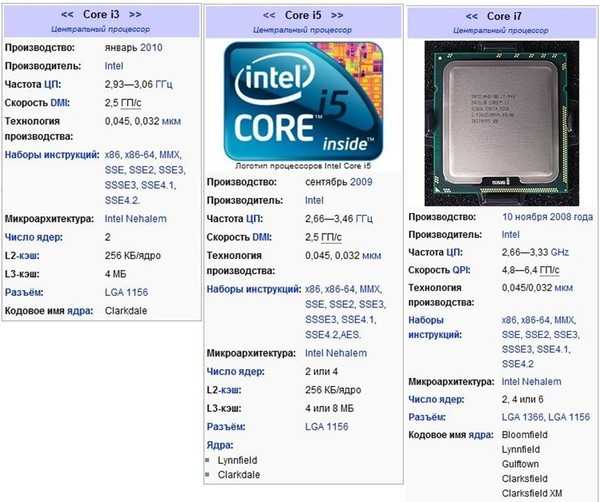
4.memory channels
More memory channels increases the speed of data transfer between the memory and the CPU.
5.maximum memory amount
The maximum amount of memory (RAM) supported.
6.bus transfer rate
Unknown. Help us by suggesting a value. (AMD A6-9225)
The bus is responsible for transferring data between different components of a computer or device.
7.Supports ECC memory
✖AMD A6-9225
✖Intel Core i3-1115G4
Error-correcting code memory can detect and correct data corruption. It is used when is it essential to avoid corruption, such as scientific computing or when running a server.
8.eMMC version
Unknown. Help us by suggesting a value. (AMD A6-9225)
Unknown. Help us by suggesting a value. (Intel Core i3-1115G4)
A higher version of eMMC allows faster memory interfaces, having a positive effect on the performance of a device. For example, when transferring files from your computer to the internal storage over USB.
For example, when transferring files from your computer to the internal storage over USB.
9.bus speed
Unknown. Help us by suggesting a value. (AMD A6-9225)
Unknown. Help us by suggesting a value. (Intel Core i3-1115G4)
The bus is responsible for transferring data between different components of a computer or device.
Benchmarks
1.PassMark result
This benchmark measures the performance of the CPU using multiple threads.
2.PassMark result (single)
This benchmark measures the performance of the CPU using a single thread.
3.Geekbench 5 result (multi)
Geekbench 5 is a cross-platform benchmark that measures a processor’s multi-core performance. (Source: Primate Labs, 2022)
4.Cinebench R20 (multi) result
Cinebench R20 is a benchmark tool that measures a CPU’s multi-core performance by rendering a 3D scene.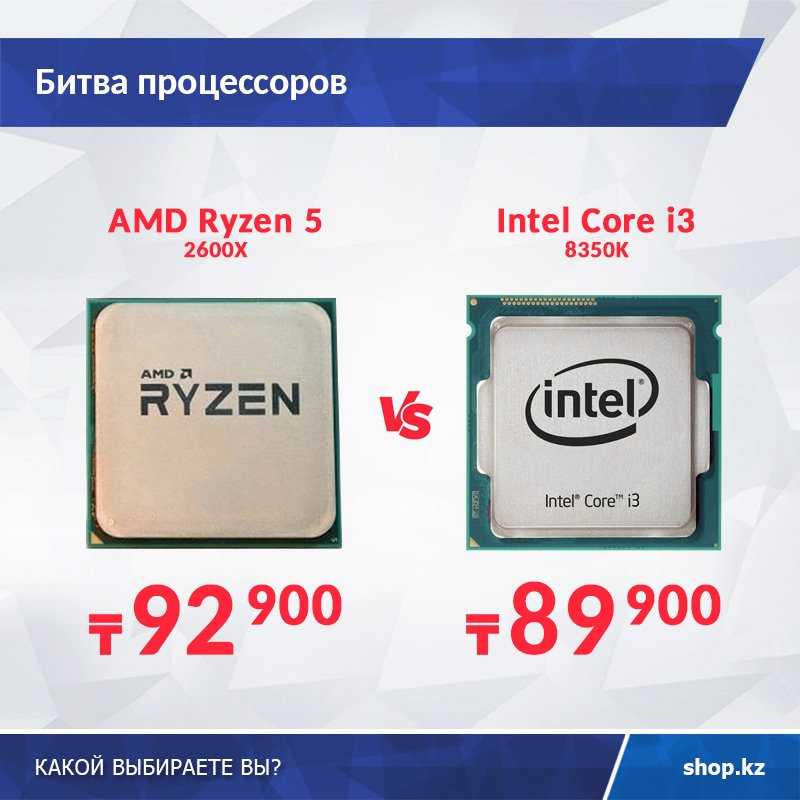
5.Cinebench R20 (single) result
Cinebench R20 is a benchmark tool that measures a CPU’s single-core performance by rendering a 3D scene.
6.Geekbench 5 result (single)
Geekbench 5 is a cross-platform benchmark that measures a processor’s single-core performance. (Source: Primate Labs, 2022)
7.Blender (bmw27) result
Unknown. Help us by suggesting a value. (AMD A6-9225)
Unknown. Help us by suggesting a value. (Intel Core i3-1115G4)
The Blender (bmw27) benchmark measures the performance of a processor by rendering a 3D scene. More powerful processors can render the scene in less time.
8.Blender (classroom) result
Unknown. Help us by suggesting a value. (AMD A6-9225)
Unknown. Help us by suggesting a value. (Intel Core i3-1115G4)
The Blender (classroom) benchmark measures the performance of a processor by rendering a 3D scene. More powerful processors can render the scene in less time.
More powerful processors can render the scene in less time.
9.performance per watt
Unknown. Help us by suggesting a value. (Intel Core i3-1115G4)
This means the CPU is more efficient, giving a greater amount of performance for each watt of power used.
Features
1.uses multithreading
✖AMD A6-9225
✔Intel Core i3-1115G4
Multithreading technology (such as Intel’s Hyperthreading or AMD’s Simultaneous Multithreading) provides increased performance by splitting each of the processor’s physical cores into virtual cores, also known as threads. This way, each core can run two instruction streams at once.
2.Has AES
✔AMD A6-9225
✔Intel Core i3-1115G4
AES is used to speed up encryption and decryption.
3.Has AVX
✔AMD A6-9225
✔Intel Core i3-1115G4
AVX is used to help speed up calculations in multimedia, scientific and financial apps, as well as improving Linux RAID software performance.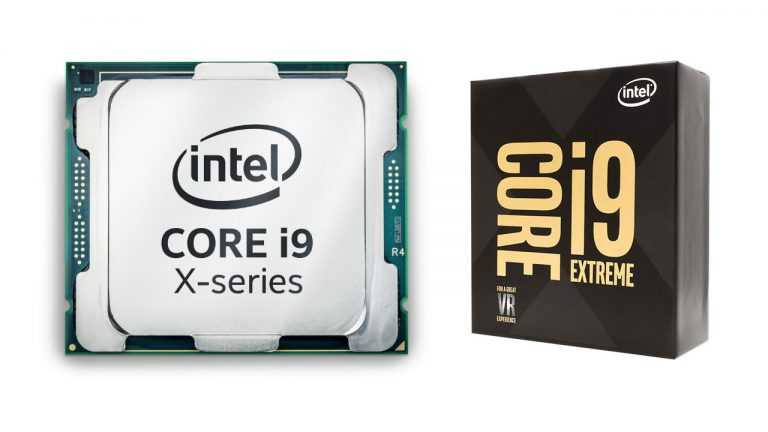
4.SSE version
SSE is used to speed up multimedia tasks such as editing an image or adjusting audio volume. Each new version contains new instructions and improvements.
5.Has F16C
✔AMD A6-9225
✔Intel Core i3-1115G4
F16C is used to speed up tasks such as adjusting the contrast of an image or adjusting volume.
6.bits executed at a time
Unknown. Help us by suggesting a value. (AMD A6-9225)
Unknown. Help us by suggesting a value. (Intel Core i3-1115G4)
NEON provides acceleration for media processing, such as listening to MP3s.
7.Has MMX
✔AMD A6-9225
✔Intel Core i3-1115G4
MMX is used to speed up tasks such as adjusting the contrast of an image or adjusting volume.
8.Has TrustZone
✖AMD A6-9225
✖Intel Core i3-1115G4
A technology integrated into the processor to secure the device for use with features such as mobile payments and streaming video using digital rights management (DRM).
9.front-end width
Unknown. Help us by suggesting a value. (AMD A6-9225)
Unknown. Help us by suggesting a value. (Intel Core i3-1115G4)
The CPU can decode more instructions per clock (IPC), meaning that the CPU performs better
Price comparison
Cancel
Which are the best CPUs?
AMD A6 vs Intel i3, which is the best: – coolgamesinside
Every budget gamer wants a budget processor (CPU) so that they can at least play the less graphics-oriented games. That’s why today I am gonna compare the best and the cheapest CPU options available in the market i.e. AMD A6 vs intel i3.
AMD A6 comes with 3.6GHz while the Intel i3 3.3GHz clock speed and i3 costs around $166 while AMD A6 5400K only costs $66. Specifically for multitasking. So AMD A6 is definitely better than intel i3 in price But AMD A6 has only 2 cores and i3 has 4 which means for multitasking performance i3 wins over A6.
| Features | Intel core i3 | AMD A6 |
| Cores | 4 | 2 |
| Threads | 4 | 2 |
| Clock speed | 3.4 GHz | 3.6 GHz |
| Boosted clock speed | 4.2GHz | 3.8 GHz |
| Price | $166 | $66 |
Some intel i3 CPUs also come with 2 cores and 4 threads
With the passing of time, CPU manufacturers upgrade/refine their CPUs so that they can give higher output than before. So, both AMD and Intel CPUs are good budget options for anyone. Now, let’s discuss the latest CPUs of Intel and AMD one by one.
Quick links:
Intel Core i3 10th Gen. latest CPU:
Intel has just brought its 10th Gen. Core i3 processor to the market. It comes with artificial intelligence (AI) with 2.5 times accelerated performance.
Not only that, Intel’s new 10th Gen. Core i3 can be able to handle twice of graphics than before and it is also 3×faster in wireless speed.
Undoubtedly, this budget processor can play many games without any lagging most surprisingly in your budget. I have personally tested Intel i3 with Thunderbolt 3 technology and try to play games. And I got shocking results.
I can easily Play GTA Vice city, Sanandreous, Devil May Cry 4, Assassin Creed Brotherhood, unity, call of duty modern warfare 2, mass effect whole series, etc. Overall, you can say that after having Intel Core i3, you can easily play most of the non-graphics oriented games without any graphics card.
Here are some specifications of core i3 10th Gen-
- Come with dual-Core and 4 threads.
- 4 MB Intel Cache.
- 10th generation.
- 4.10 GHz Max frequency.
AMD A6:
Just like Intel core i3 (since the use of Pentium is continuously reducing), A6 is also an entry-level CPU but from AMD. Since AMD is a tough competitor of Intel, so both the companies try to compete with each other and A3 is also launched to compete with i3.
The latest generation of A6 is 7th Gen, which is launched in 2019. Though it’s clock speed is less than Intels i3 but if you exclude that, it is quite good than other budget processors especially for gaming.
Its base clock speed is around 1.8 GHz to 2.7 GHz and in the latest one(9220) you get a really good, well-optimized processor in the budget. Not only that, but it also supports DDR4 RAM, which is the latest and fastest RAM type.
Specifications of AMD A6:
- Dual-core with 2 threads.
- Radeon R5 graphics.
- 3.8GHz Max speed.
Talking about the power consumption, it needs only 6 Watt max. power to run on your PC.
Overall, this is also a very good budget processor and it will be quite interesting to see who wins in AMD a6 vs intel i3 battle.
Also Read: How to find steam screenshot folder?
Who is the winner AMD A6 vs intel i3?
Now, I am gonna directly compare both the processors in different categories of gaming, a general user want and finally, I will declare the winner.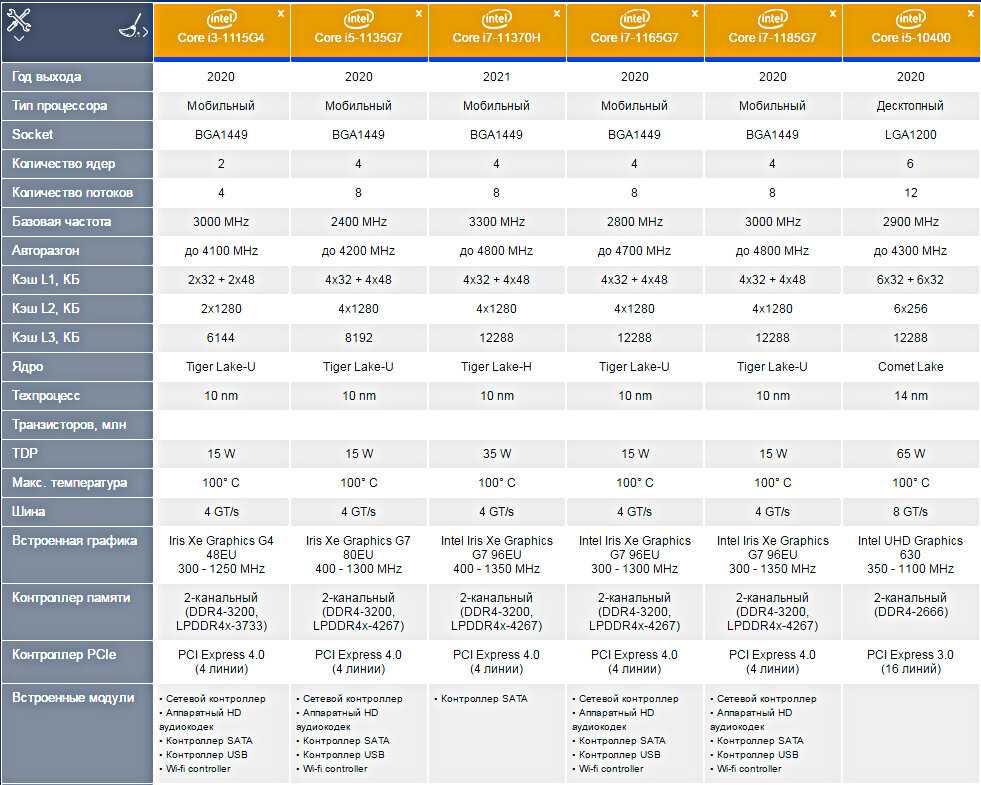
Performance:
I have installed both the CPUs in my system and played GTA V, Mass Effect 3, all the games I have mentioned earlier and I got this result-
While I play GTA V with core i3 and with 8GB RAM, I can easily play it (of course in low settings) without any kind of lag. Note that I didn’t have used any graphics card. All the game was running on i3 and I found the result quite impressive.
The average fps I got was around 40-60 fps depending upon the areas. But just think, if you can play GTA V with this, then you can easily play any small game (less resource required).
Talking about the Mass Effect 3, I can easily maintain 60+ fps with core i3 which is a really good game. Basically, if you choose core i3 with basic use you can play games also.
After that, I have installed AMD A6 and play the same games with 8GB RAM and no graphics card like before.
In Mass Effect 3, Assassin creed brotherhood I got fps around 40-50 fps. But, when I play GTA V I feel a little bit of lag. But, it is playable.
But, it is playable.
So, according to me, Core i3 can give you better performance than AMD A6. But, wait there are different factors also to say which one you should choose.
Price:
Now, the main category which is the price. Since you want to choose it in your budget so every penny matters.
Check the latest price of Intel core i3 from below-
Buy from amazon
Check the latest price AMD A6 from here-
Buy from amazon
My opinion:
I have tested both the CPUs and I see that core i3 can give more output (performance) than A6 in general uses or in gaming. Obviously, you can’t run games in 4K with this CPU but you can at least play then in the entry-level. So, if you expect performance in the budget, please go with Intel i3 but if you have a tight budget A6 is the best option available for you in the market.
Winner:
Both the CPUs are good but you can buy them according to your purpose.
For those who want good performance (a little bit expensive)- Intel core i3.
For those who have a tight budget- AMD A6.
Also Read: Fix steam content file locked.
Frequently asked questions (FAQs):
Is AMD a6 better than i5?
In performance-wise, core i5 is definitely better than AMD A6. As, I have discussed in games like GTA V, Mass effect 3, i3 gave more fps than A6.
Then obviously i5 can give far better fps and can handle more complex software. And if you have a good budget i5 is a great investment for you and I hope till the next decade you don’t need to upgrade your CPU after having i5.
But, from a budget perspective, A6 is cheaper than i3 and i5. If you are budget conscious, you should go with A6 than i5.
Which AMD processor is equivalent to i3?
There are various Intel processors that came to the market before i3. But with the time, they are almost unusable. The users of Intel Pentium, which is a low budget CPU than i3, is also going to the deadline.
Since AMD and Intel are continuously refining their CPUs so AMD A6 can far better than Pentium.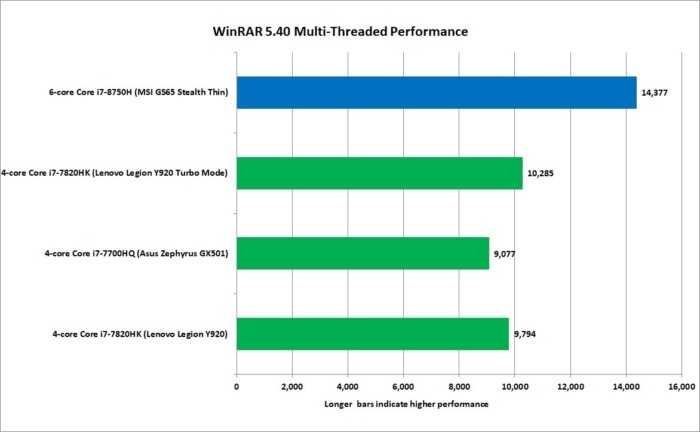 But, it gives low performance than i3.
But, it gives low performance than i3.
But, in budget-wise A6 has an advantage. It is way cheaper than i3. So, you can assume A6 as a competitor with i3.
How fast is AMD a6 processor?
It can give an output of 2.1GHz max.
What is better AMD or Intel?
It totally depends on your buying perspective. Generally, AMD is known for budget products and I don’t think I have to say for what Intel is known for?
So, both have their own benefits and you have to decide which one is good for you.
Wrapping up:
This post contains Amazon affiliate links, so if you buy through our links, we get some commissions, but don’t worry, no extra cost for you.
In this post, AMD a6 vs intel i3, I have discussed which is the best for you in the base of performance. I hope after reading this post you can decide which processor is good for you.
That’s it for today, see you in the next post. Tada:)
AMD A6-5200 APU vs Intel Core i3-5015U
- CPU
- GPU
- SSD
- HDD
- RAM
- USB
VS
YouTube*NEW*
About
Real World Speed
Performance profile from 14,329 user samples
Benchmark your CPU here
4,033 User Benchmarks
Best Bench: 58% Base clock 2. 1 GHz, turbo 2.1 GHz (avg)
1 GHz, turbo 2.1 GHz (avg)
Worst Bench: 19% Base clock 2.1 GHz, turbo 0.5 GHz (avg)
Poor: 19%
Great: 58%
SPEED RANK: 797th / 1363
|
Gaming 49% Yacht |
Desktop 54% Yacht |
Workstation 34% Sail boat |
10,296 User Benchmarks
Best Bench: 38% Base clock 2 GHz, turbo 2 GHz (avg)
Worst Bench: 19% Base clock 2 GHz, turbo 0.8 GHz (avg)
Poor: 19%
Great: 38%
SPEED RANK: 1227th / 1363
|
Gaming 31% Sail boat |
Desktop 32% Sail boat |
Workstation 22% Surfboard |
| Effective Speed Effective CPU Speed |
48.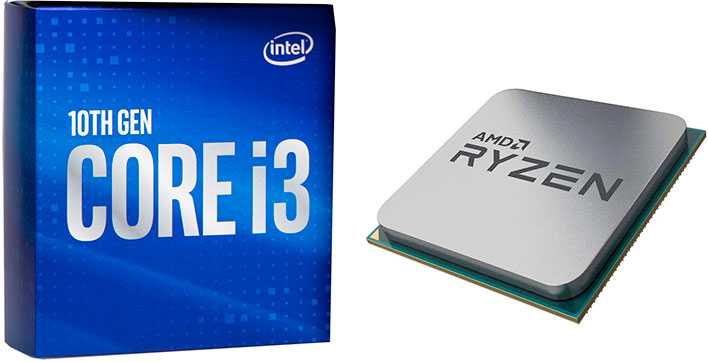 7 % 7 % |
Much faster effective speed. +57% |
30.9 % |
| Memory Avg. Memory Latency |
71.8 Pts | Much lower memory latency. +64% |
43.8 Pts | |||
| 1-Core Avg. Single Core Speed |
56.5 Pts | Hugely faster single-core speed. +96% |
28.8 Pts | |||
| 2-Core Avg. Dual Core Speed |
101 Pts | Much faster dual-core speed. +76% |
57.5 Pts | |||
| 4-Core Avg. Quad Core Speed |
150 Pts | Much faster quad-core speed. +43% |
105 Pts | |||
| 8-Core Avg. 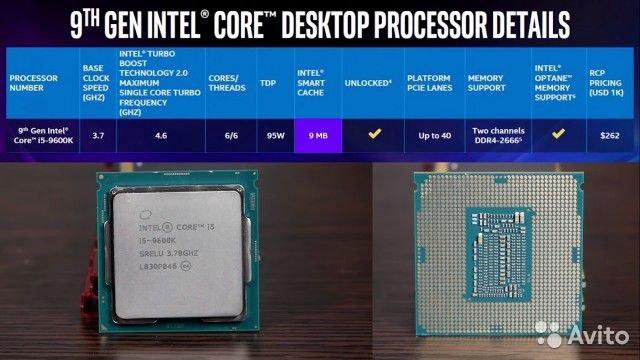 Octa Core Speed Octa Core Speed
|
153 Pts | Much faster octa-core speed. +42% |
108 Pts |
| Memory OC Memory Latency |
87.5 Pts | Much lower OC memory latency. +56% |
56.2 Pts | |||
| 1-Core OC Single Core Speed |
68.5 Pts | Hugely faster OC single-core speed. +122% |
30.8 Pts | |||
| 2-Core OC Dual Core Speed |
126 Pts | Hugely faster OC dual-core speed. +105% |
61.6 Pts | |||
| 4-Core OC Quad Core Speed |
180 Pts | Much faster OC quad-core speed. +48% |
122 Pts | |||
| 8-Core OC Octa Core Speed |
181 Pts | Much faster OC octa-core speed. +48% |
122 Pts |
Market Share
Based on 55,530,615 CPUs tested.
See market share leaders
| Market Share Market Share (trailing 30 days) |
0 % | 0.01 % | Insanely higher market share. +∞% |
|||
| User Rating UBM User Rating |
51 % | 51 % |
| Age Newest |
85+ Months | More recent. +17% |
103+ Months | |||
| 64-Core OC Multi Core Speed |
181 Pts | Much faster OC 64-core speed. +48% |
122 Pts | |||
| 64-Core Avg. Multi Core Speed |
154 Pts | Much faster 64-core speed. +41% |
109 Pts |
Systems with these CPUs
Top Builds that include these CPUs
- Dell Inspiron 3558 (210)
- Dell Inspiron 5558 (36)
- Toshiba Satellite E45W-C (36)
- Acer Aspire E5-573 (36)
- Toshiba Satellite C55-C (13)
- Compaq Presario CQ-21 (10)
- Dell Inspiron 5758 (6)
- HP Notebook (64)
- HP 15 Notebook PC (36)
- HP Pavilion 15 Notebook PC (31)
- Acer Aspire E1-522 (20)
- Toshiba Satellite C55Dt-A (14)
- HP 500-c60 (14)
- Samsung DP505/DM515 (13)
Custom PC Builder (Start a new build)
Build your perfect PC: compare component prices, popularity, speed and value for money.
CHOOSE A COMPONENT:
CPU GPU SSD HDD RAM MBD
Processor Rankings (Price vs Performance)
September 2022 CPU Rankings.
We calculate effective speed which measures real world performance for typical users. Effective speed is adjusted by current prices to yield a value for money rating. Our calculated values are checked against thousands of individual user ratings. The customizable table below combines these factors to bring you the definitive list of top CPUs. [CPUPro]
ADVERTISEMENT
Group Test Results
- Best user rated — User sentiment trumps benchmarks for this comparison.
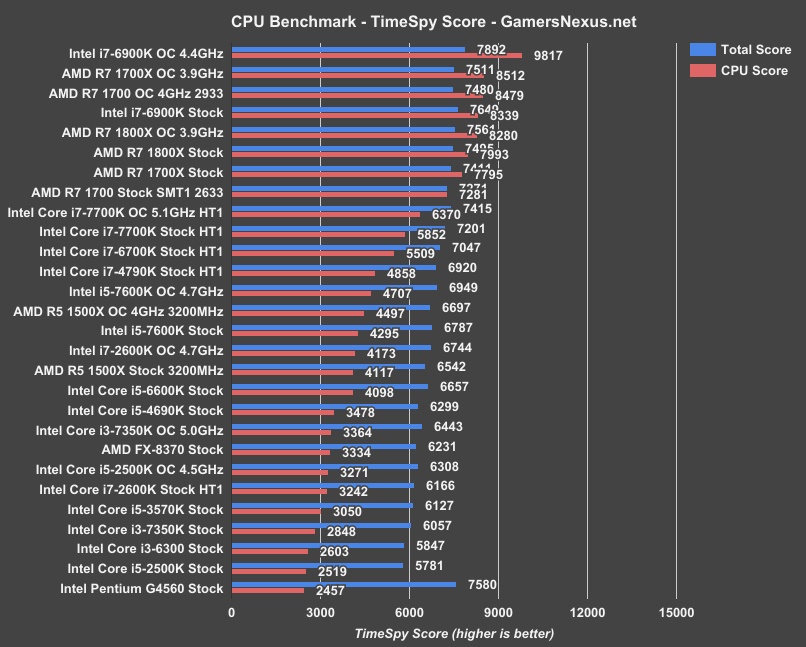
- Best value for money — Value for money is based on real world performance.
- Fastest real world speed — Real World Speed measures performance for typical consumers.
How Fast Is Your CPU? (Bench your build)
Size up your PC in less than a minute.
Welcome to our freeware PC speed test tool. UserBenchmark will test your PC and compare the results to other users with the same components. You can quickly size up your PC, identify hardware problems and explore the best upgrades.
UserBenchmark of the month
Gaming
Desktop
ProGaming
CPUGPUSSDHDDRAMUSB
How it works
- — Download and run UserBenchmark.
- — CPU tests include: integer, floating and string.
- — GPU tests include: six 3D game simulations.
- — Drive tests include: read, write, sustained write and mixed IO.

- — RAM tests include: single/multi core bandwidth and latency.
- — SkillBench (space shooter) tests user input accuracy.
- — Reports are generated and presented on userbenchmark.com.
- — Identify the strongest components in your PC.
- — See speed test results from other users.
- — Compare your components to the current market leaders.
- — Explore your best upgrade options with a virtual PC build.
- — Compare your in-game FPS to other users with your hardware.
Frequently Asked Questions
Best User Rated
-
Intel Core i5-12600K
-
Intel Core i5-12400F
-
Intel Core i7-12700K
-
Intel Core i3-12100F
-
Intel Core i5-12400
-
Intel Core i5-11600K
-
Intel Core i7-11700K
-
AMD Ryzen 5 5600X
-
AMD Ryzen 5 3600
-
Intel Core i5-10400F
-
Intel Core i5-11400F
-
Intel Core i5-11400
About • User Guide • FAQs • Email • Privacy • Developer • YouTube
Feedback
AMD A6-6400K APU vs Intel Core i3-1005G1
- CPU
- GPU
- SSD
- HDD
- RAM
- USB
VS
YouTube*NEW*
About
Real World Speed
Performance profile from 40,509 user samples
Benchmark your CPU here
27,004 User Benchmarks
Best Bench: 66% Base clock 1.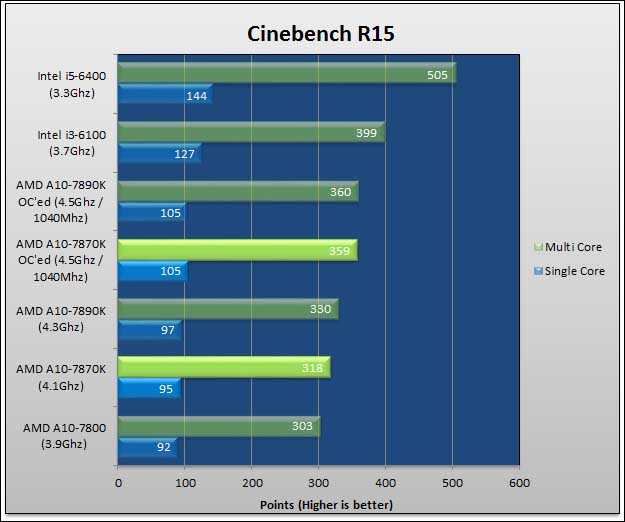 2 GHz, turbo 3.35 GHz (avg)
2 GHz, turbo 3.35 GHz (avg)
Worst Bench: 40% Base clock 1.2 GHz, turbo 1.7 GHz (avg)
Poor: 40%
Great: 66%
SPEED RANK: 611th / 1363
|
Gaming 56% Gunboat |
Desktop 66% Battle cruiser |
Workstation 42% Speed boat |
13,505 User Benchmarks
Best Bench: 52% Base clock 3.9 GHz, turbo 4 GHz (avg)
Worst Bench: 25% Base clock 3.9 GHz, turbo 4.1 GHz (avg)
Poor: 25%
Great: 52%
SPEED RANK: 964th / 1363
|
Gaming 41% Speed boat |
Desktop 49% Yacht |
Workstation 28% Raft |
| Effective Speed Effective CPU Speed |
56.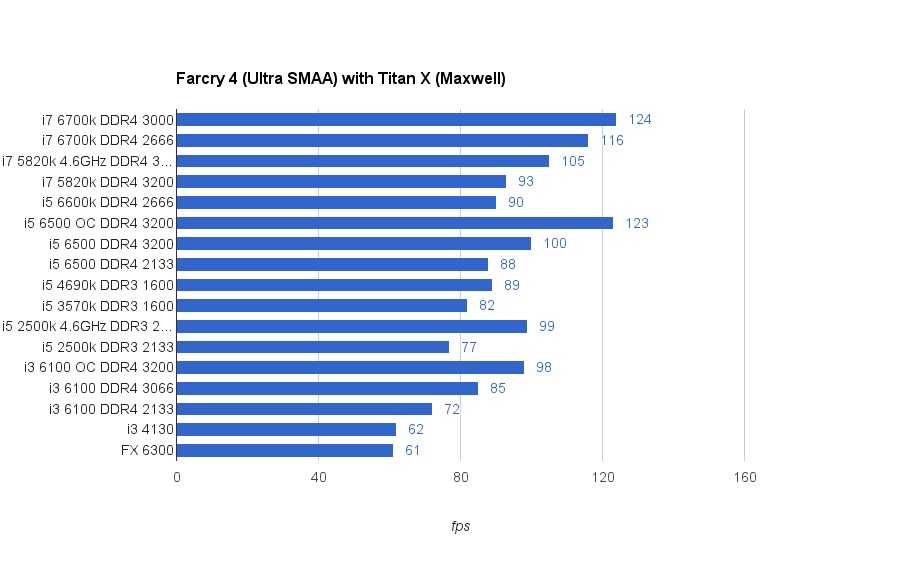 3 % 3 % |
Much faster effective speed. +36% |
41.2 % |
| Memory Avg. Memory Latency |
68.2 Pts | +1% | 67.3 Pts | |||
| 1-Core Avg. Single Core Speed |
105 Pts | Much faster single-core speed. +72% |
60.9 Pts | |||
| 2-Core Avg. Dual Core Speed |
177 Pts | Hugely faster dual-core speed. +99% |
88.9 Pts | |||
| 4-Core Avg. Quad Core Speed |
257 Pts | Hugely faster quad-core speed. +183% |
90.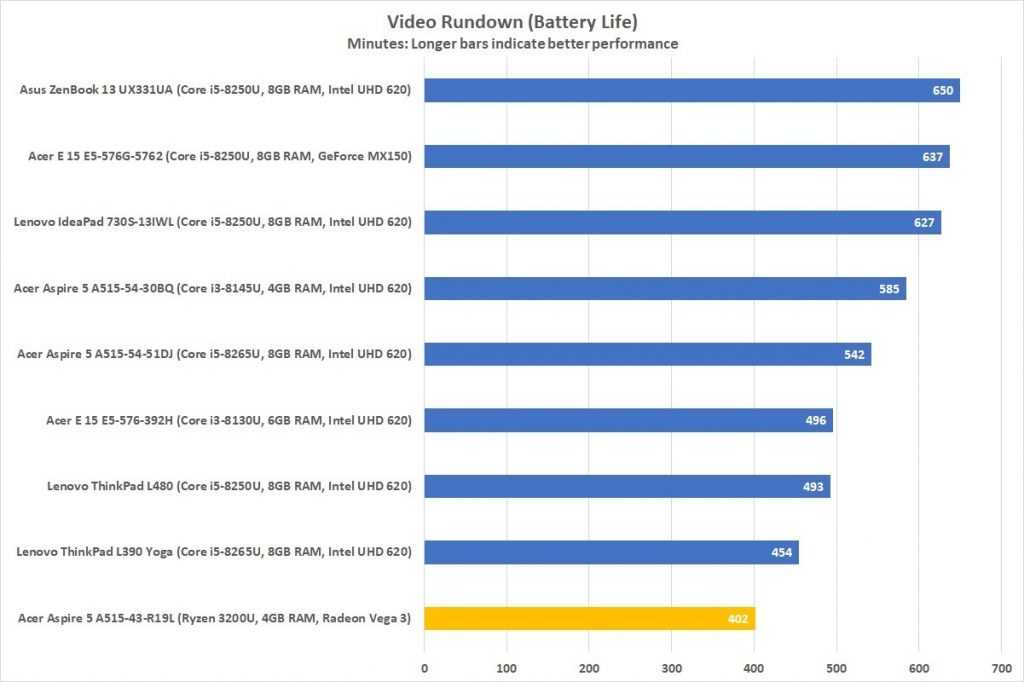 7 Pts 7 Pts |
|||
| 8-Core Avg. Octa Core Speed |
260 Pts | Hugely faster octa-core speed. +182% |
92.1 Pts |
| Memory OC Memory Latency |
82.7 Pts | 88.8 Pts | Slightly lower OC memory latency. +7% |
|||
| 1-Core OC Single Core Speed |
120 Pts | Much faster OC single-core speed. +66% |
72.3 Pts | |||
| 2-Core OC Dual Core Speed |
216 Pts | Hugely faster OC dual-core speed. +106% |
105 Pts | |||
| 4-Core OC Quad Core Speed |
302 Pts | Hugely faster OC quad-core speed. +185% |
106 Pts | |||
| 8-Core OC Octa Core Speed |
303 Pts | Hugely faster OC octa-core speed. +189% |
105 Pts |
Market Share
Based on 55,530,615 CPUs tested.
See market share leaders
| Market Share Market Share (trailing 30 days) |
0.22 % | Insanely higher market share. +2,100% |
0.01 % | |||
| User Rating UBM User Rating |
55 % | Slightly more popular. +6% |
52 % |
| Age Newest |
36+ Months | Much more recent. +65% |
104+ Months | |||
| 64-Core OC Multi Core Speed |
301 Pts | Hugely faster OC 64-core speed. +184% |
106 Pts | |||
| 64-Core Avg. Multi Core Speed |
261 Pts | Hugely faster 64-core speed. +185% |
91.5 Pts |
ADVERTISEMENT
it is the bang for the buck (IF OVERCLOCKED) [Sep ’21 owiehxebcnxn]
MORE DETAILS
Systems with these CPUs
Top Builds that include these CPUs
- Lenovo 81WE (773)
- Acer Aspire A315-56 (474)
- Dell Inspiron 3593 (400)
- Dell Inspiron 3501 (322)
- HP 250 G7 Notebook PC (267)
- HP Laptop 15-dy1xxx (232)
- Asus VivoBook_ASUSLaptop X515JA_X515JA (218)
- Gigabyte GA-F2A68HM-S1 (36)
- MSI A68HM-E33 V2 (MS-7721) (26)
- Asus A68HM-K (23)
- Gigabyte GA-F2A68HM-HD2 (14)
- Gigabyte GA-F2A58M-DS2 (13)
- Gigabyte GA-F2A78M-HD2 (13)
- Gigabyte GA-F2A68HM-DS2 (12)
Custom PC Builder (Start a new build)
Build your perfect PC: compare component prices, popularity, speed and value for money.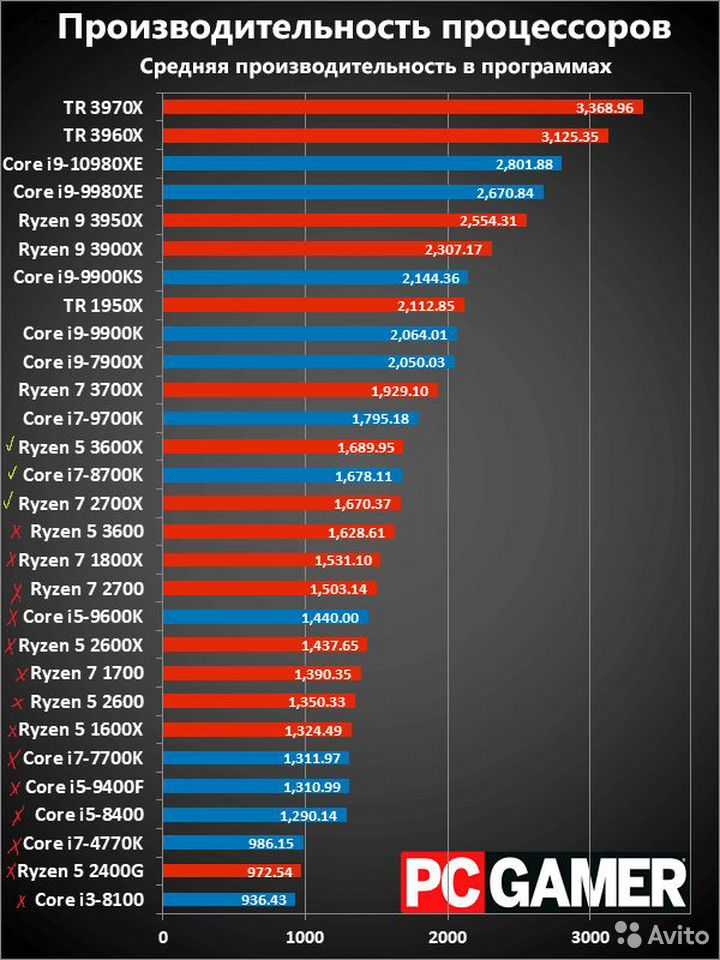
CHOOSE A COMPONENT:
CPU GPU SSD HDD RAM MBD
Processor Rankings (Price vs Performance)
September 2022 CPU Rankings.
We calculate effective speed which measures real world performance for typical users. Effective speed is adjusted by current prices to yield a value for money rating. Our calculated values are checked against thousands of individual user ratings. The customizable table below combines these factors to bring you the definitive list of top CPUs. [CPUPro]
ADVERTISEMENT
Group Test Results
- Best user rated — User sentiment trumps benchmarks for this comparison.

- Best value for money — Value for money is based on real world performance.
- Fastest real world speed — Real World Speed measures performance for typical consumers.
How Fast Is Your CPU? (Bench your build)
Size up your PC in less than a minute.
Welcome to our freeware PC speed test tool. UserBenchmark will test your PC and compare the results to other users with the same components. You can quickly size up your PC, identify hardware problems and explore the best upgrades.
UserBenchmark of the month
Gaming
Desktop
ProGaming
CPUGPUSSDHDDRAMUSB
How it works
- — Download and run UserBenchmark.
- — CPU tests include: integer, floating and string.
- — GPU tests include: six 3D game simulations.
- — Drive tests include: read, write, sustained write and mixed IO.

- — RAM tests include: single/multi core bandwidth and latency.
- — SkillBench (space shooter) tests user input accuracy.
- — Reports are generated and presented on userbenchmark.com.
- — Identify the strongest components in your PC.
- — See speed test results from other users.
- — Compare your components to the current market leaders.
- — Explore your best upgrade options with a virtual PC build.
- — Compare your in-game FPS to other users with your hardware.
Frequently Asked Questions
Best User Rated
-
Intel Core i5-12600K
-
Intel Core i5-12400F
-
Intel Core i7-12700K
-
Intel Core i3-12100F
-
Intel Core i5-12400
-
Intel Core i5-11600K
-
Intel Core i7-11700K
-
AMD Ryzen 5 5600X
-
AMD Ryzen 5 3600
-
Intel Core i5-10400F
-
Intel Core i5-11400F
-
Intel Core i5-11400
About • User Guide • FAQs • Email • Privacy • Developer • YouTube
Feedback
AMD A6-9225 vs Intel Core i3-4130
Comparative analysis of AMD A6-9225 and Intel Core i3-4130 processors for all known characteristics in the following categories: Essentials, Performance, Memory, Graphics, Graphics interfaces, Graphics API support, Compatibility, Peripherals, Advanced Technologies, Virtualization, Graphics image quality, Security & Reliability.
Benchmark processor performance analysis: PassMark — Single thread mark, PassMark — CPU mark, GFXBench 4.0 — Car Chase Offscreen (Frames), GFXBench 4.0 — Car Chase Offscreen (Fps), GFXBench 4.0 — Manhattan (Frames), GFXBench 4.0 — Manhattan (Fps), GFXBench 4.0 — T-Rex (Frames), GFXBench 4.0 — T-Rex (Fps), CompuBench 1.5 Desktop — Face Detection (mPixels/s), Geekbench 4 — Single Core, Geekbench 4 — Multi-Core, 3DMark Fire Strike — Physics Score, CompuBench 1.5 Desktop — Ocean Surface Simulation (Frames/s), CompuBench 1.5 Desktop — T-Rex (Frames/s), CompuBench 1.5 Desktop — Video Composition (Frames/s), CompuBench 1.5 Desktop — Bitcoin Mining (mHash/s).
AMD A6-9225
Buy on Amazon
vs
Intel Core i3-4130
Buy on Amazon
Differences
Reasons to consider the AMD A6-9225
- Around 25% higher maximum core temperature: 90°C vs 72°C
- 2x more L2 cache, more data can be stored in the L2 cache for quick access later
- 3.
 6x lower typical power consumption: 15 Watt vs 54 Watt
6x lower typical power consumption: 15 Watt vs 54 Watt - Around 32% better performance in GFXBench 4.0 — T-Rex (Frames): 4199 vs 3185
- Around 32% better performance in GFXBench 4.0 — T-Rex (Fps): 4199 vs 3185
| Maximum core temperature | 90°C vs 72°C |
| L2 cache | 1 MB vs 256 KB (per core) |
| Thermal Design Power (TDP) | 15 Watt vs 54 Watt |
| GFXBench 4.0 — T-Rex (Frames) | 4199 vs 3185 |
| GFXBench 4.0 — T-Rex (Fps) | 4199 vs 3185 |
Reasons to consider the Intel Core i3-4130
- Around 31% higher clock speed: 3.4 GHz vs 2.
 6 GHz
6 GHz - A newer manufacturing process allows for a more powerful, yet cooler running processor: 22 nm vs 28 nm
- Around 60% better performance in PassMark — Single thread mark: 1893 vs 1182
- 2.5x better performance in PassMark — CPU mark: 3310 vs 1343
- Around 9% better performance in GFXBench 4.0 — Car Chase Offscreen (Frames): 820 vs 754
- Around 9% better performance in GFXBench 4.0 — Car Chase Offscreen (Fps): 820 vs 754
- Around 32% better performance in GFXBench 4.0 — Manhattan (Frames): 2010 vs 1522
- Around 32% better performance in GFXBench 4.0 — Manhattan (Fps): 2010 vs 1522
- Around 42% better performance in CompuBench 1.5 Desktop — Face Detection (mPixels/s): 1.973 vs 1.391
| Maximum frequency | 3.4 GHz vs 2.6 GHz |
| Manufacturing process technology | 22 nm vs 28 nm |
| PassMark — Single thread mark | 1893 vs 1182 |
| PassMark — CPU mark | 3310 vs 1343 |
GFXBench 4.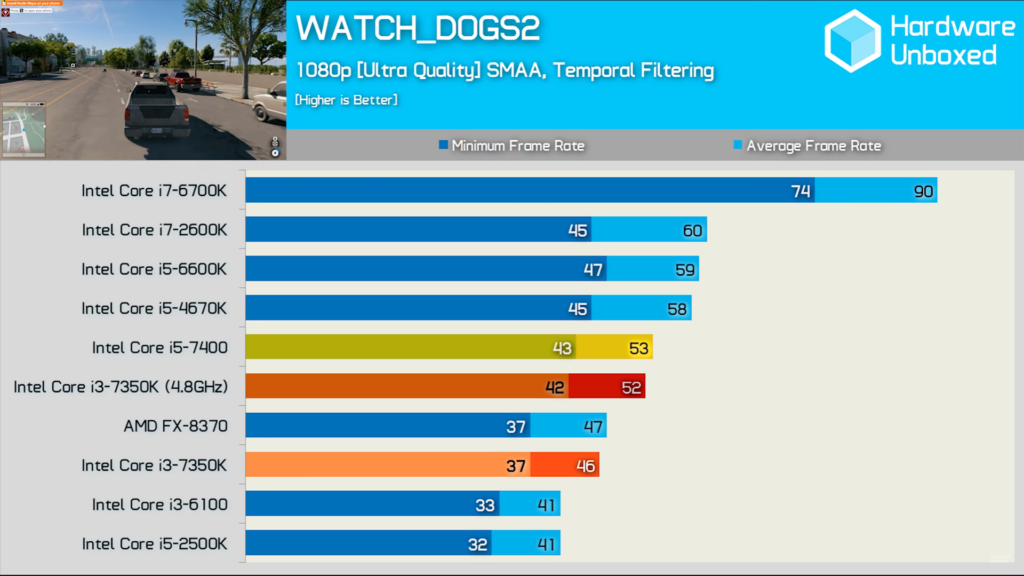 0 — Car Chase Offscreen (Frames) 0 — Car Chase Offscreen (Frames) |
820 vs 754 |
| GFXBench 4.0 — Car Chase Offscreen (Fps) | 820 vs 754 |
| GFXBench 4.0 — Manhattan (Frames) | 2010 vs 1522 |
| GFXBench 4.0 — Manhattan (Fps) | 2010 vs 1522 |
| CompuBench 1.5 Desktop — Face Detection (mPixels/s) | 1.973 vs 1.391 |
Compare benchmarks
CPU 1: AMD A6-9225
CPU 2: Intel Core i3-4130
| PassMark — Single thread mark |
|
|
||
| PassMark — CPU mark |
|
|
||
GFXBench 4. 0 — Car Chase Offscreen (Frames) 0 — Car Chase Offscreen (Frames) |
|
|
||
| GFXBench 4.0 — Car Chase Offscreen (Fps) |
|
|
||
| GFXBench 4.0 — Manhattan (Frames) |
|
|
||
GFXBench 4. 0 — Manhattan (Fps) 0 — Manhattan (Fps) |
|
|
||
| GFXBench 4.0 — T-Rex (Frames) |
|
|
||
| GFXBench 4.0 — T-Rex (Fps) |
|
|
||
| CompuBench 1.5 Desktop — Face Detection (mPixels/s) |
|
|
| Name | AMD A6-9225 | Intel Core i3-4130 |
|---|---|---|
| PassMark — Single thread mark | 1182 | 1893 |
| PassMark — CPU mark | 1343 | 3310 |
GFXBench 4. 0 — Car Chase Offscreen (Frames) 0 — Car Chase Offscreen (Frames) |
754 | 820 |
| GFXBench 4.0 — Car Chase Offscreen (Fps) | 754 | 820 |
| GFXBench 4.0 — Manhattan (Frames) | 1522 | 2010 |
| GFXBench 4.0 — Manhattan (Fps) | 1522 | 2010 |
| GFXBench 4.0 — T-Rex (Frames) | 4199 | 3185 |
| GFXBench 4.0 — T-Rex (Fps) | 4199 | 3185 |
| CompuBench 1.5 Desktop — Face Detection (mPixels/s) | 1.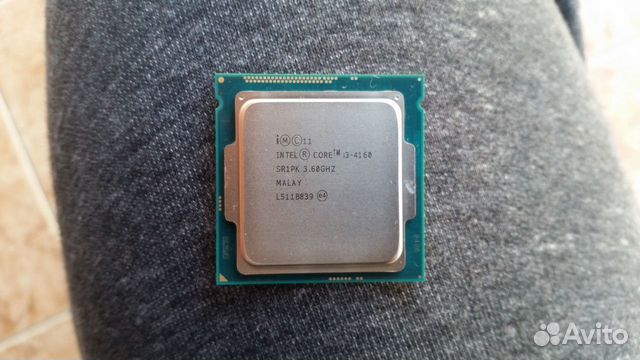 391 391 |
1.973 |
| Geekbench 4 — Single Core | 766 | |
| Geekbench 4 — Multi-Core | 1651 | |
| 3DMark Fire Strike — Physics Score | 0 | |
| CompuBench 1.5 Desktop — Ocean Surface Simulation (Frames/s) | 33.765 | |
| CompuBench 1.5 Desktop — T-Rex (Frames/s) | 0.259 | |
| CompuBench 1.5 Desktop — Video Composition (Frames/s) | 0.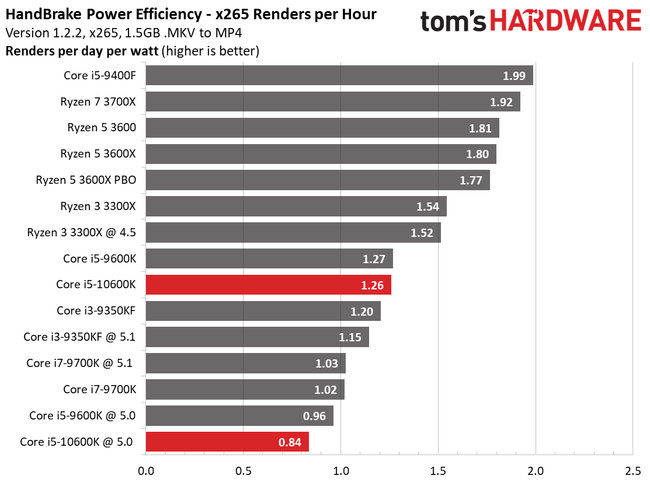 496 496 |
|
| CompuBench 1.5 Desktop — Bitcoin Mining (mHash/s) | 2.802 |
Compare specifications (specs)
| AMD A6-9225 | Intel Core i3-4130 | |
|---|---|---|
| Family | AMD A-Series Processors | |
| Launch date | Q2 2018 | September 2013 |
| OPN Tray | AM9225AYN23AC | |
| OS Support | Windows 10 — 64-Bit Edition, RHEL x86 64-Bit, Ubuntu x86 64-Bit | |
| Place in performance rating | 1221 | 1592 |
| Series | AMD A6-Series APU for Laptops | 4th Generation Intel® Core™ i3 Processors |
| Vertical segment | Laptop | Desktop |
| Architecture codename | Haswell | |
| Launch price (MSRP) | $120 | |
| Price now | $139. 99 99 |
|
| Processor Number | i3-4130 | |
| Status | Discontinued | |
| Value for money (0-100) | 10.09 | |
| Base frequency | 3.1 GHz | 3.40 GHz |
| Compute Cores | 5 | |
| L2 cache | 1 MB | 256 KB (per core) |
| Manufacturing process technology | 28 nm | 22 nm |
| Maximum core temperature | 90°C | 72°C |
| Maximum frequency | 2.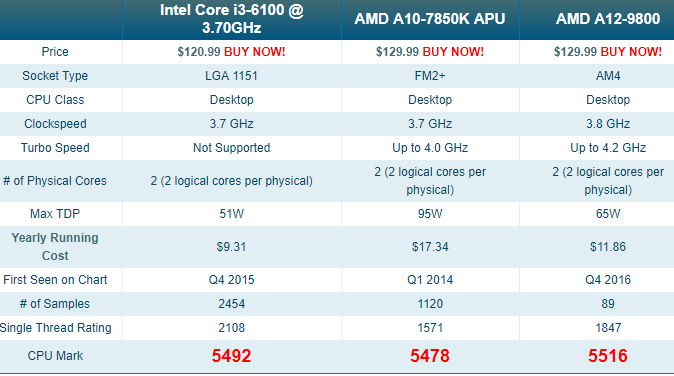 6 GHz 6 GHz |
3.4 GHz |
| Number of cores | 2 | 2 |
| Number of GPU cores | 3 | |
| Unlocked | ||
| 64 bit support | ||
| Bus Speed | 5 GT/s DMI2 | |
| Die size | 177 mm | |
| L1 cache | 64 KB (per core) | |
| L3 cache | 3072 KB (shared) | |
| Maximum case temperature (TCase) | 72 °C | |
| Number of threads | 4 | |
| Transistor count | 1400 million | |
| Max memory channels | 1 | 2 |
| Supported memory frequency | 2133 MHz | |
| ECC memory support | ||
| Maximum memory bandwidth | 25. 6 GB/s 6 GB/s |
|
| Maximum memory size | 32 GB | |
| Supported memory types | DDR3-1333/1600, DDR3L-1333/1600 @ 1.5V | |
| Enduro | ||
| Graphics max frequency | 686 MHz | 1.15 GHz |
| Processor graphics | AMD Radeon R4 Graphics | Intel® HD Graphics 4400 |
| Switchable graphics | ||
| Unified Video Decoder (UVD) | ||
| Video Codec Engine (VCE) | ||
| Device ID | 0x41E | |
| Graphics base frequency | 350 MHz | |
| Graphics max dynamic frequency | 1. 15 GHz 15 GHz |
|
| Intel® Clear Video HD technology | ||
| Intel® InTru™ 3D technology | ||
| Intel® Quick Sync Video | ||
| Max video memory | 2 GB | |
| DisplayPort | ||
| HDMI | ||
| DVI | ||
| eDP | ||
| Number of displays supported | 3 | |
| VGA | ||
| Wireless Display (WiDi) support | ||
| DirectX | 12 | 11. 1/12 1/12 |
| Vulkan | ||
| OpenGL | 4.3 | |
| Configurable TDP | 10-15 Watt | |
| Thermal Design Power (TDP) | 15 Watt | 54 Watt |
| Low Halogen Options Available | ||
| Max number of CPUs in a configuration | 1 | |
| Package Size | 37.5mm x 37.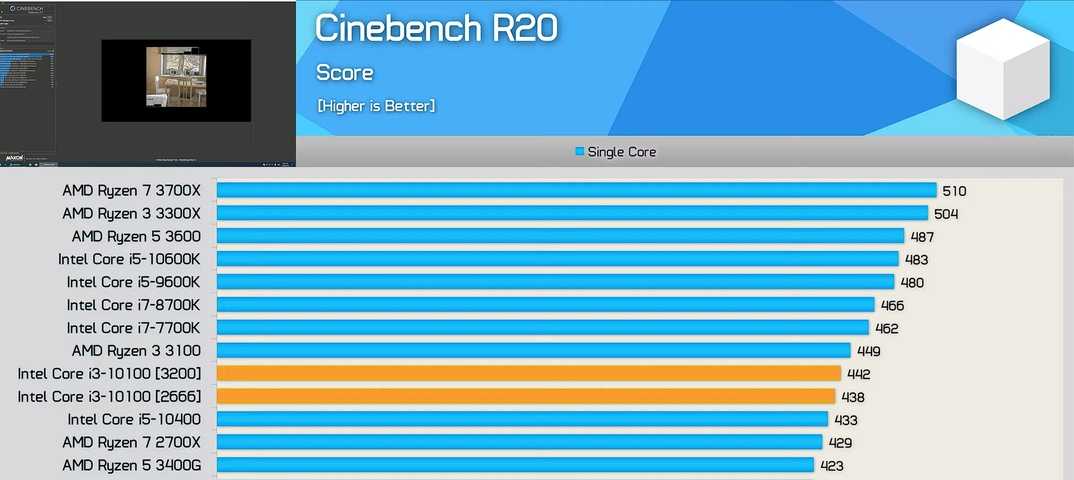 5mm 5mm |
|
| Sockets supported | FCLGA1150 | |
| Thermal Solution | PCG 2013C | |
| PCI Express revision | 3.0 | Up to 3.0 |
| Max number of PCIe lanes | 16 | |
| PCIe configurations | Up to 1×16, 2×8, 1×8+2×4 | |
| Scalability | 1S Only | |
| Adaptive Voltage and Frequency Scaling (AVFS) | ||
| AMD App Acceleration | ||
| AMD HD3D technology | ||
| AMD Mantle API | ||
| DualGraphics | ||
| Fused Multiply-Add 4 (FMA4) | ||
| Intel® AES New Instructions | ||
| Enhanced Intel SpeedStep® technology | ||
| Idle States | ||
| Instruction set extensions | Intel® SSE4. 1, Intel® SSE4.2, Intel® AVX2 1, Intel® SSE4.2, Intel® AVX2 |
|
| Intel 64 | ||
| Intel® Advanced Vector Extensions (AVX) | ||
| Intel® Hyper-Threading technology | ||
| Intel® Stable Image Platform Program (SIPP) | ||
| Intel® TSX-NI | ||
| Intel® Turbo Boost technology | ||
| Intel® vPro™ Platform Eligibility | ||
| Thermal Monitoring | ||
| AMD Virtualization (AMD-V™) | ||
| Intel® Virtualization Technology (VT-x) | ||
| Intel® Virtualization Technology for Directed I/O (VT-d) | ||
| Intel® VT-x with Extended Page Tables (EPT) | ||
| Max resolution over DisplayPort | [email protected] | |
| Max resolution over eDP | [email protected] | |
Max resolution over HDMI 1.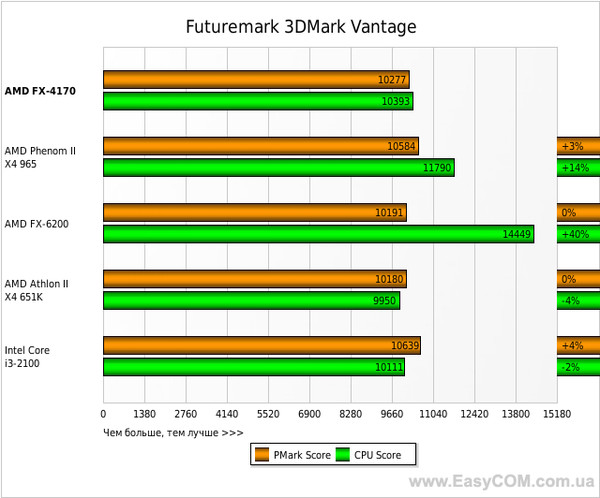 4 4 |
[email protected] | |
| Max resolution over VGA | [email protected] | |
| Execute Disable Bit (EDB) | ||
| Intel® Trusted Execution technology (TXT) |
AMD A6-5400K vs Intel Core i3-3220: What is the difference?
Smartphone-graphic wire headphones
44 BALLLA
AMD A6-5400K
36 BALLLA
Intel Core i3-3220
VS
64 AMD A6-5400K
TI Is A6-5400K better than Intel Core i3-3220?
- 9.09% higher CPU speed?
2 x 3.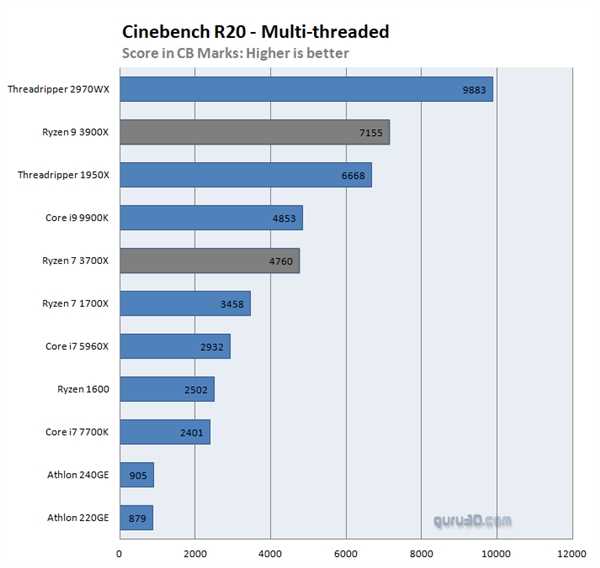 6GHz vs 2 x 3.3GHz
6GHz vs 2 x 3.3GHz - 266MHz higher RAM speed?
1866MHz vs 1600MHz - 4.7°C higher than maximum operating temperature?
70°C vs 65.3°C - GPU frequency 110MHz higher?
760MHz vs 650MHz - 0.5MB more L2 cache?
1MB vs 0.5MB - Has an unlocked multiplier?
- 0.25MB/core more L2 cache per core?
0.5MB/core vs 0.25MB/core - Has AES?
Why is Intel Core i3-3220 better than AMD A6-5400K?
- 2 more CPU threads?
4 vs 2 - Smaller 10nm semiconductors?
22nm vs 32nm - 1.96x higher PassMark score?
4232 vs 2155 - 10W below TDP?
55W vs 65W - 32KB more L1 cache?
128KB vs 96KB - 4.6GB/s more memory bandwidth?
25.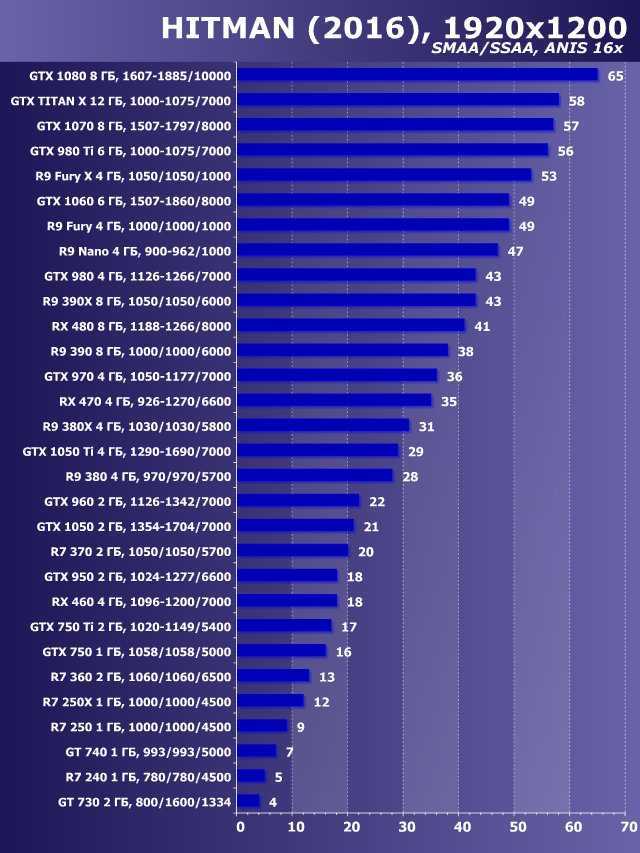 6GB/s vs 21GB/s
6GB/s vs 21GB/s - 30.45% higher PassMark score (single)?
1765 vs 1353 - Multithreaded?
What are the most popular comparisons?
AMD A6-5400K
vs
Intel Core i5-3337U
Intel Core i3-3220
vs
Intel Core i5-3470
AMD A6-5400K
VS
AMD A10-5800K
Intel Core i3-3220
VS
AMD E1-1200 9000
AMD A6-5400K
VS 9000 VS 9000 ° B. Core i5-4670S
Intel Core i3-3220
VS
Intel Core i5-2400
AMD A6-5400K
VS
Intel Core I5-4258U
9000 9000 9000 9000. E-300
AMD A6-5400K
VS
Intel Pentium G3220
Intel Core i3-3220
VS
A8-55500
AMD A6-5400K
A40002 A4-5300
Intel Core I3-3220
AMD A4-3400
AMD A6-5400K
VS
A8-5600K
Intel Core i3-3220
VS
AMD Athlon II X2
AMD A6-5400K
VS 9000 VS 9000 VS 9000 i5-2540M
Intel Core i3-3220
Intel Core i3-3220
6. 7 /10
7 /10
3 Reviews of Users
Functions
Reference and quality
reviews still not
8.0 /10 9000
3 VOTES
reviews are not yet
5.0 /10
3 Votes
performance
reviews yet there are no
6.0 /10
3 Votes
Reliability
reviews yet there is no
/10
3 Votes
Energy efficiency
Reviews still not
/10
9000 3 Votes
Production
Production Protection, Production Protection, Production Production Protection. cpu speed
2 x 3.6GHz
2 x 3.3GHz
The CPU speed indicates how many processing cycles per second a processor can perform, given all its cores (processors). It is calculated by adding the clock speeds of each core or, in the case of multi-core processors, each group of cores.
2nd processor thread
More threads result in better performance and better multitasking.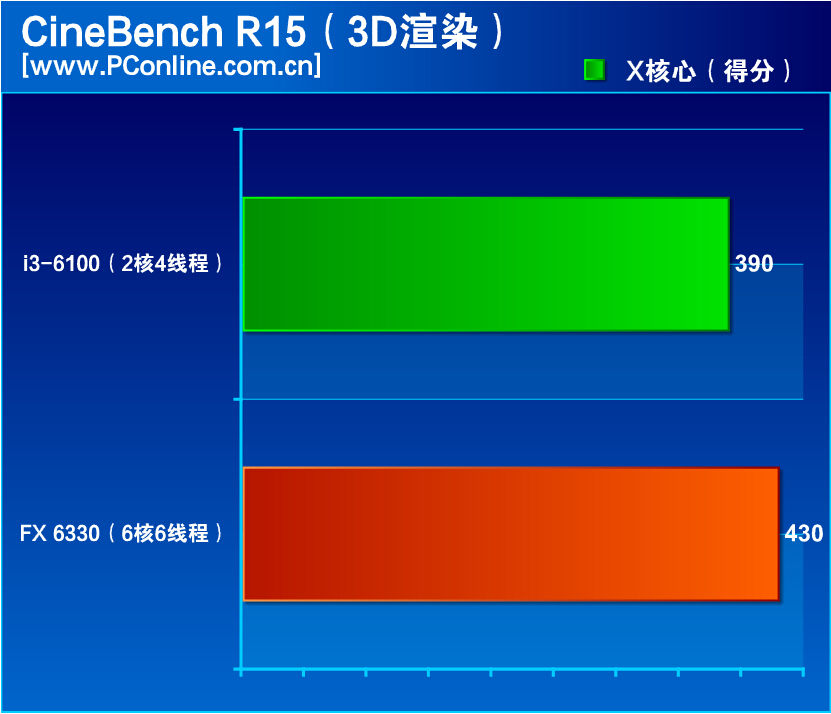
3.speed turbo clock
3.8GHz
Unknown. Help us offer a price. (Intel Core i3-3220)
When the processor is running below its limits, it can jump to a higher clock speed to increase performance.
4. Has an unlocked multiplier of
✔AMD A6-5400K
✖Intel Core i3-3220
Some processors come with an unlocked multiplier and are easier to overclock, allowing you to get better performance in games and other applications.
5.L2 Cache
More L2 scratchpad memory results in faster results in CPU and system performance tuning.
6.L3 cache
Unknown. Help us offer a price. (AMD A6-5400K)
More L3 scratchpad results in faster results in CPU and system performance tuning.
7.L1 cache
More L1 cache results in faster results in CPU and system performance tuning.
8.core L2
0.5MB/core
0.25MB/core
More data can be stored in L2 scratchpad for access by each processor core.
9.core L3
Unknown. Help us offer a price. (AMD A6-5400K)
1.5MB/core
More data can be stored in L3 scratchpad for access by each processor core.
Memory
1.RAM speed
1866MHz
1600MHz
Can support faster memory which speeds up system performance.
2.max memory bandwidth
21GB/s
25.6GB/s
This is the maximum rate at which data can be read from or stored in memory.
3.DDR version
DDR (Double Data Rate Synchronous Dynamic Random Access Memory) is the most common type of RAM. New versions of DDR memory support higher maximum speeds and are more energy efficient.
4. Memory channels
Memory channels
More memory channels increase the speed of data transfer between memory and processor.
5.max memory
Unknown. Help us offer a price. (AMD A6-5400K)
Maximum amount of memory (RAM).
6.baud rate bus
5.4GT/s
The bus is responsible for transferring data between different components of a computer or device.
7.Supports Memory Error Code
✖AMD A6-5400K
✖Intel Core i3-3220
Memory Error Code can detect and repair data corruption. It is used when necessary to avoid distortion, such as in scientific computing or when starting a server.
8.eMMC version
Unknown. Help us offer a price. (AMD A6-5400K)
Unknown. Help us offer a price. (Intel Core i3-3220)
A newer version of eMMC — built-in flash memory card — speeds up the memory interface, has a positive effect on device performance, for example, when transferring files from a computer to internal memory via USB.
9.bus frequency
Unknown. Help us offer a price. (AMD A6-5400K)
Unknown. Help us offer a price. (Intel Core i3-3220)
The bus is responsible for transferring data between various components of a computer or device
Geotagging
1. PassMark result
This test measures processor performance using multi-threading.
2. PassMark result (single)
This test measures processor performance using a thread of execution.
3.Geekbench 5 result (multi-core)
Unknown. Help us offer a price. (AMD A6-5400K)
Unknown. Help us offer a price. (Intel Core i3-3220)
Geekbench 5 is a cross-platform test that measures the performance of a multi-core processor. (Source: Primate Labs, 2022)
4. Cinebench R20 result (multi-core)
Unknown. Help us offer a price. (AMD A6-5400K)
(AMD A6-5400K)
Unknown. Help us offer a price. (Intel Core i3-3220)
Cinebench R20 is a benchmark that measures the performance of a multi-core processor by rendering a 3D scene.
5.Cinebench R20 result (single core)
Unknown. Help us offer a price. (AMD A6-5400K)
Unknown. Help us offer a price. (Intel Core i3-3220)
Cinebench R20 is a test to evaluate the performance of a single core processor when rendering a 3D scene.
6.Geekbench 5 result (single core)
Unknown. Help us offer a price. (AMD A6-5400K)
Unknown. Help us offer a price. (Intel Core i3-3220)
Geekbench 5 is a cross-platform benchmark that measures the single-core performance of a processor. (Source: Primate Labs, 2022)
7. Blender test result (bmw27)
Unknown. Help us offer a price. (AMD A6-5400K)
Unknown. Help us offer a price.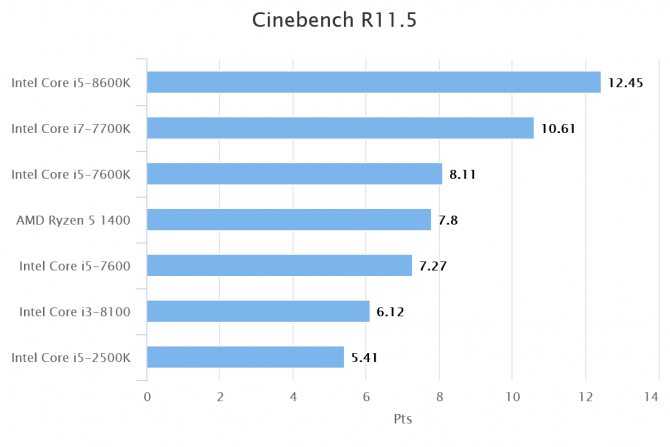 (Intel Core i3-3220)
(Intel Core i3-3220)
Blender benchmark (bmw27) measures CPU performance by rendering a 3D scene. More powerful processors can render a scene in a shorter time.
8.Blender result (classroom)
Unknown. Help us offer a price. (AMD A6-5400K)
Unknown. Help us offer a price. (Intel Core i3-3220)
The Blender (classroom) benchmark measures CPU performance by rendering a 3D scene. More powerful processors can render a scene in a shorter time.
9.performance per watt
This means that the processor is more efficient, giving more performance per watt of power used.
Functions
1.uses multithreading
✖AMD A6-5400K
✔Intel Core i3-3220
processor cores into logical cores, also known as threads. Thus, each core can run two instruction streams at the same time.
2. Has AES
✔AMD A6-5400K
✖Intel Core i3-3220
AES is used to speed up encryption and decryption.
3. Has AVX
✔AMD A6-5400K
✔Intel Core i3-3220
AVX is used to help speed up calculations in multimedia, scientific and financial applications, and to improve the performance of the Linux RAID program.
4.Version SSE
SSE is used to speed up multimedia tasks such as editing images or adjusting audio volume. Each new version contains new instructions and improvements.
5. Has F16C
✔AMD A6-5400K
✔Intel Core i3-3220
F16C is used to speed up tasks such as image contrast adjustment or volume control.
6.bits transmitted at the same time
Unknown. Help us offer a price. (AMD A6-5400K)
Unknown. Help us offer a price. (Intel Core i3-3220)
NEON provides faster media processing such as MP3 listening.
7. Has MMX
✔AMD A6-5400K
✔Intel Core i3-3220
MMX is used to speed up tasks such as adjusting image contrast or adjusting volume.
8.Has TrustZone
✖AMD A6-5400K
✖Intel Core i3-3220
The technology is integrated into the processor to ensure device security when using features such as mobile payments and streaming video using Digital Rights Management (DRM) technology ).
9.interface width
Unknown. Help us offer a price. (AMD A6-5400K)
Unknown. Help us offer a price. (Intel Core i3-3220)
The processor can decode more instructions per clock (IPC), which means that the processor performs better
Price comparison
Cancel
Which CPU is better?
AMD A6-9225 vs Intel Core i3-1115G4: What is the difference?
35 BALLLA
AMD A6-9225
56 BALLLA
Intel Core i3-1115G4
VS
64 facts compared to
AMD A6-9225
Intel Core I3-115G4
Intel Core i3-1115G4?
- 13W below TDP?
15W vs 28W - Has FMA4?
Why is Intel Core i3-1115G4 better than AMD A6-9225?
- 15.
 38% faster CPU speed?
38% faster CPU speed?
2 x 3GHz vs 2 x 2.6GHz - 1600MHz higher RAM speed?
3733MHz vs 2133MHz - 2 more CPU threads?
4 vs 2 - 10°C higher than maximum operating temperature?
100°C vs 90°C - Is 18nm smaller?
10nm vs 28nm - 1.5MB more L2 cache?
2.5MB vs 1MB - 4.79x higher PassMark score?
6401 vs 1336 - 1GHz higher turbo clock speed?
4.1GHz vs 3.1GHz
Which comparisons are the most popular?
AMD A6-9225
VS
Intel Core i3-8130U
Intel Core i3-1115G4
VS
AMD Ryzen 3 3250U
A6-9225 9000u 9000 VS
VS
VS
0003
Intel Core i3-1115G4
VS
AMD Ryzen 3 5300U
AMD A6-9225
VS
Intel Core i5-8265U
9000 VS 9000 VS 9000 AMD AMD AMD AMD AMD AMD A6-9225
VS
Intel Celeron N4020
Intel Core i3-115G4
VS
Intel Core i5-1135g7
AMD A6-9225 9000 9000 VS
Intel Core I5-1 -1115G4
vs
AMD Ryzen 5 3500U
AMD A6-9225
vs
AMD Ryzen 3 3200U
Intel Core i3-1115G4
vs
Intel Core i5-10210U
AMD A6-9225
vs
AMD Ryzen 5 2500u
Intel Core i3-1115g4
VS
Intel Core i3-1005g1
AMD A6-9225
VS
Intel Core I5-8250U
Intel Core Core I3-1115G
Intel Core i3-10110U
AMD A6-9225
VS
Intel Core i5-6200u
Intel Core i3-1115g4
VS
Intel Core i5-8250u
VS 9000 VS 9000 VS 9000 VS 9000 VS 9000 VS 9000 VS 9000 VS 9000 VS 9000 VS
Comparison of prices
Users reviews
General rating
AMD A6-9225
2 Reviews of Users
AMD A6-9225
8.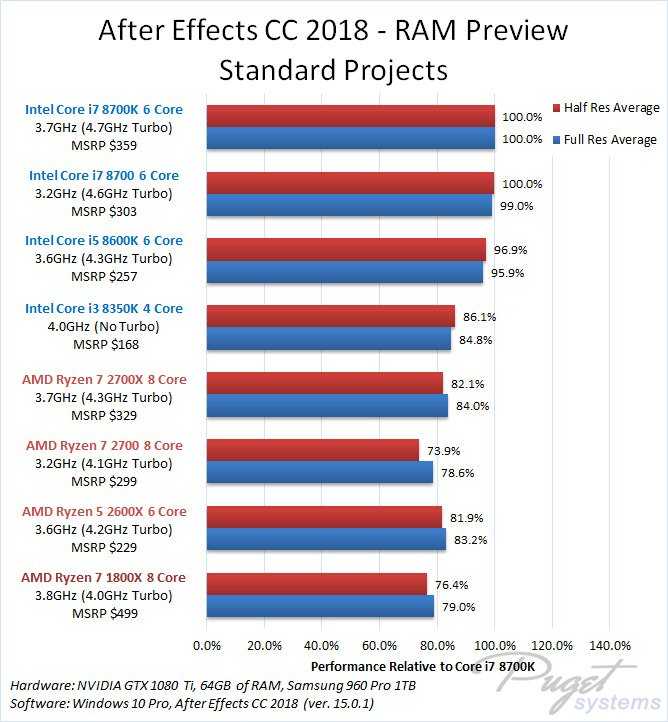 0 /10 9000
0 /10 9000
2 Reviews of Users
Intel Core I3-110003
8 reviews of users
Intel Core i3-1115g4
/10
8 Reviews of users
Functions
Cost ratio
/10
Votes
9. 10
8 Votes
Games
6.5 /10
2 Votes
8.4 /10
8 Votes
performance
8.0 /10 9
2 Votes
9
1 Votes
8.3 /10
7 Votes
Productivity
1. Ski -rustic processor
2 x 2.6GHZ
2 x 3GHZ
The central processor speed shows how many processing cycles per second can perform a processor processor per second. , considering all its cores (processors). It is calculated by adding the clock speeds of each core or, in the case of multi-core processors, each group of cores.
2nd processor thread
More threads result in better performance and better multitasking.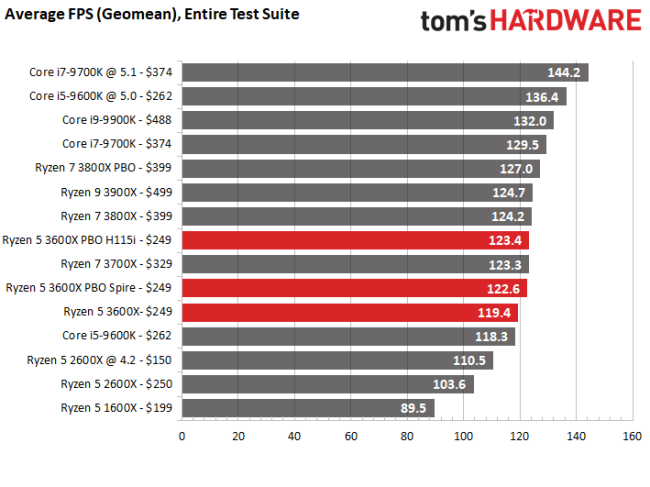
3.speed turbo clock
3.1GHz
4.1GHz
When the processor is running below its limits, it can jump to a higher clock speed to increase performance.
4. Has an unlocked multiplier
✖AMD A6-9225
✖Intel Core i3-1115G4
Some processors come with an unlocked multiplier and are easier to overclock, allowing for better performance in games and other applications.
5.L2 Cache
More L2 scratchpad memory results in faster results in CPU and system performance tuning.
6.L3 cache
Unknown. Help us offer a price. (AMD A6-9225)
More L3 scratchpad memory results in faster results in CPU and system performance tuning.
7.L1 cache
More L1 cache results in faster results in CPU and system performance tuning.
8.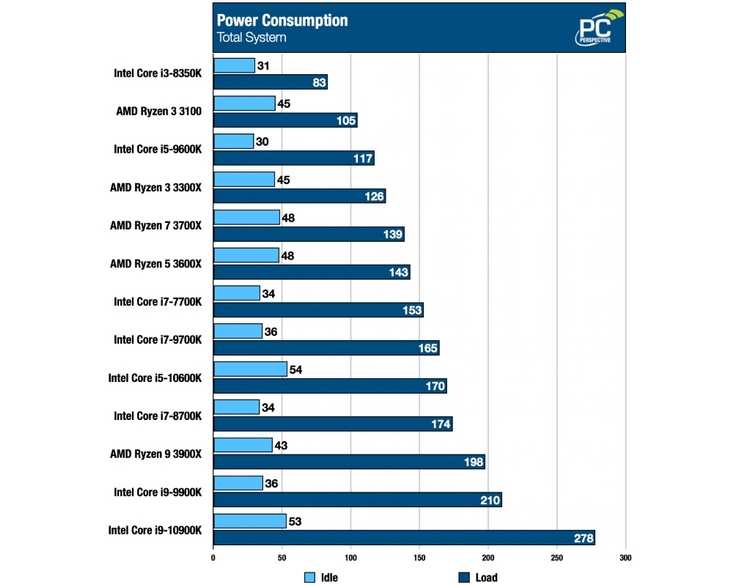 core L2
core L2
0.5MB/core
1.25MB/core
More data can be stored in the L2 scratchpad for access by each processor core.
9. L3 core
Unknown. Help us offer a price. (AMD A6-9225)
3MB/core
More data can be stored in L3 scratchpad for access by each processor core.
Memory
1.RAM speed
2133MHz
3733MHz
Can support faster memory which speeds up system performance.
2.max memory bandwidth
Unknown. Help us offer a price. (AMD A6-9225)
Unknown. Help us offer a price. (Intel Core i3-1115G4)
This is the maximum rate at which data can be read from or stored in memory.
3. DDR memory version
DDR (Double Data Rate Synchronous Dynamic Random Access Memory) is the most common type of RAM. New versions of DDR memory support higher maximum speeds and are more energy efficient.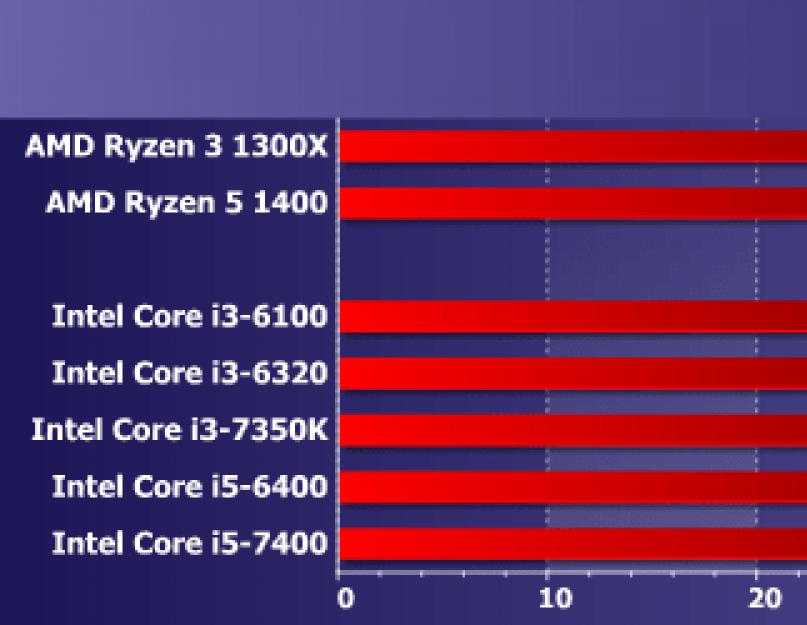
4.Memory channels
More memory channels increase the speed of data transfer between memory and processor.
5.max memory
Maximum amount of memory (RAM).
6.bus baud rate
Unknown. Help us offer a price. (AMD A6-9225)
The bus is responsible for transferring data between various components of a computer or device.
7. Supports Memory Error Code
✖AMD A6-9225
✖Intel Core i3-1115G4
Memory Error Code can detect and repair data corruption. It is used when necessary to avoid distortion, such as in scientific computing or when starting a server.
8.eMMC version
Unknown. Help us offer a price. (AMD A6-9225)
Unknown. Help us offer a price. (Intel Core i3-1115G4)
The newer version of eMMC — built-in flash memory card — speeds up the memory interface, has a positive effect on device performance, for example, when transferring files from a computer to internal memory via USB.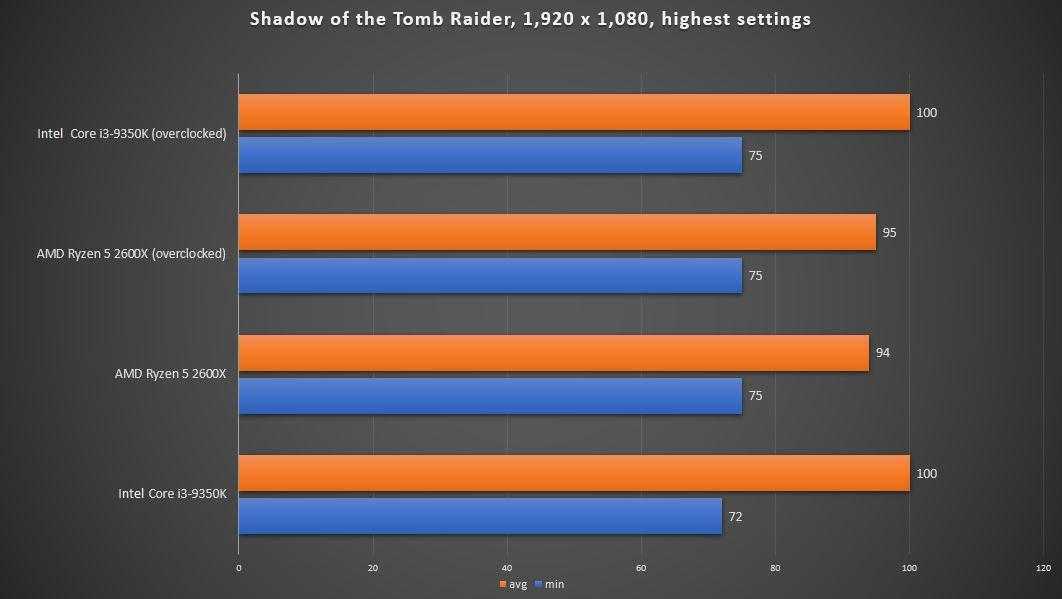
9.bus frequency
Unknown. Help us offer a price. (AMD A6-9225)
Unknown. Help us offer a price. (Intel Core i3-1115G4)
The bus is responsible for transferring data between various components of a computer or device
Geotagging
1. PassMark result
This test measures processor performance using multi-threading.
2. PassMark result (single)
This test measures processor performance using a thread of execution.
3.Geekbench 5 result (multi-core)
Geekbench 5 is a cross-platform benchmark that measures the performance of a multi-core processor. (Source: Primate Labs,2022)
4.Cinebench R20 result (multi-core)
Cinebench R20 is a test that measures the performance of a multi-core processor by rendering a 3D scene.
5.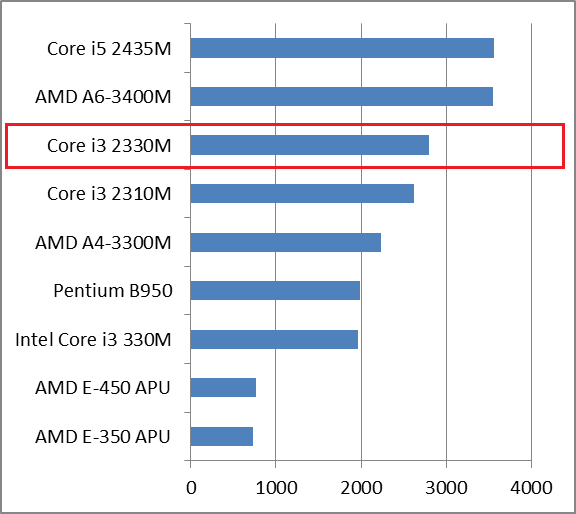 Cinebench R20 result (single core)
Cinebench R20 result (single core)
Cinebench R20 is a test to evaluate the performance of a single core processor when rendering a 3D scene.
6.Geekbench 5 result (single core)
Geekbench 5 is a cross-platform benchmark that measures the single core performance of a processor. (Source: Primate Labs, 2022)
7. Blender test result (bmw27)
Unknown. Help us offer a price. (AMD A6-9225)
Unknown. Help us offer a price. (Intel Core i3-1115G4)
The Blender benchmark (bmw27) measures CPU performance by rendering a 3D scene. More powerful processors can render a scene in a shorter time.
8.Blender result (classroom)
Unknown. Help us offer a price. (AMD A6-9225)
Unknown. Help us offer a price. (Intel Core i3-1115G4)
The Blender (classroom) benchmark measures CPU performance by rendering a 3D scene. More powerful processors can render a scene in a shorter time.
9.power per watt
Unknown. Help us offer a price. (Intel Core i3-1115G4)
This means that the processor is more efficient, giving more performance per watt of power used.
Functions
1.uses multithreading
✖AMD A6-9225
✔Intel Core i3-1115G4
processor cores into logical cores, also known as threads. Thus, each core can run two instruction streams at the same time.
2. Has AES
✔AMD A6-9225
✔Intel Core i3-1115G4
AES is used to speed up encryption and decryption.
3. Has AVX
✔AMD A6-9225
✔Intel Core i3-1115G4
AVX is used to help speed up calculations in multimedia, scientific and financial applications, and to improve the performance of the Linux RAID program.
4.Version SSE
SSE is used to speed up multimedia tasks such as editing images or adjusting audio volume.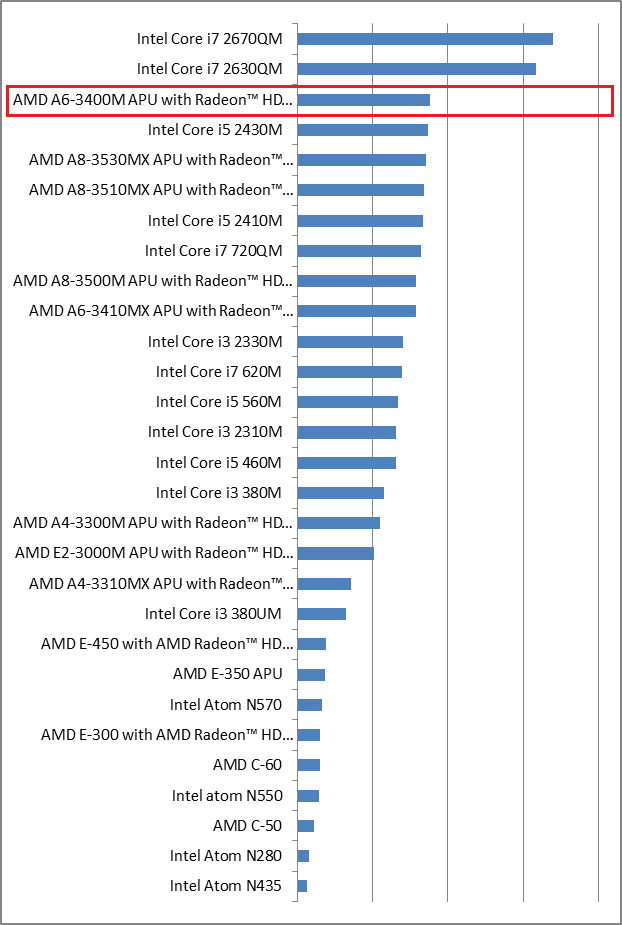 Each new version contains new instructions and improvements.
Each new version contains new instructions and improvements.
5. Has F16C
✔AMD A6-9225
✔Intel Core i3-1115G4
F16C is used to speed up tasks such as image contrast adjustment or volume control.
6.bits transmitted at the same time
Unknown. Help us offer a price. (AMD A6-9225)
Unknown. Help us offer a price. (Intel Core i3-1115G4)
NEON provides faster media processing such as MP3 listening.
7. Has MMX
✔AMD A6-9225
✔Intel Core i3-1115G4
MMX is used to speed up tasks such as adjusting image contrast or adjusting volume.
8.Has TrustZone
✖AMD A6-9225
✖Intel Core i3-1115G4
The technology is integrated into the processor to ensure device security when using features such as mobile payments and streaming video using Digital Rights Management (DRM) technology ).
9.interface width
Unknown. Help us offer a price. (AMD A6-9225)
Unknown. Help us offer a price. (Intel Core i3-1115G4)
The processor can decode more instructions per clock (IPC), which means that the processor performs better
Price comparison
Cancel
Which CPUs are better?
Compare AMD A6 6310 and Intel Core i3 2367M
AMD A6 6310
1.8GHz | 4 cores | BGA 769
VS
Intel Core i3 2367M
1.4GHz | 2 cores | BGA 1023
benchmark
General result
Based on 7 tests:
AMD A6 6310 faster 289%
AMD A6 6310
389
Intel Core i3 2367M
100000
Geef )
AMD A6 6310 39.43% faster
AMD A6 6310
3207
Intel Core i3 2367M
2300
GeekBench 3 (Seekingle core 3)0003
Reasons to choose AMD A6 6310
- Smaller CPU (28nm vs.
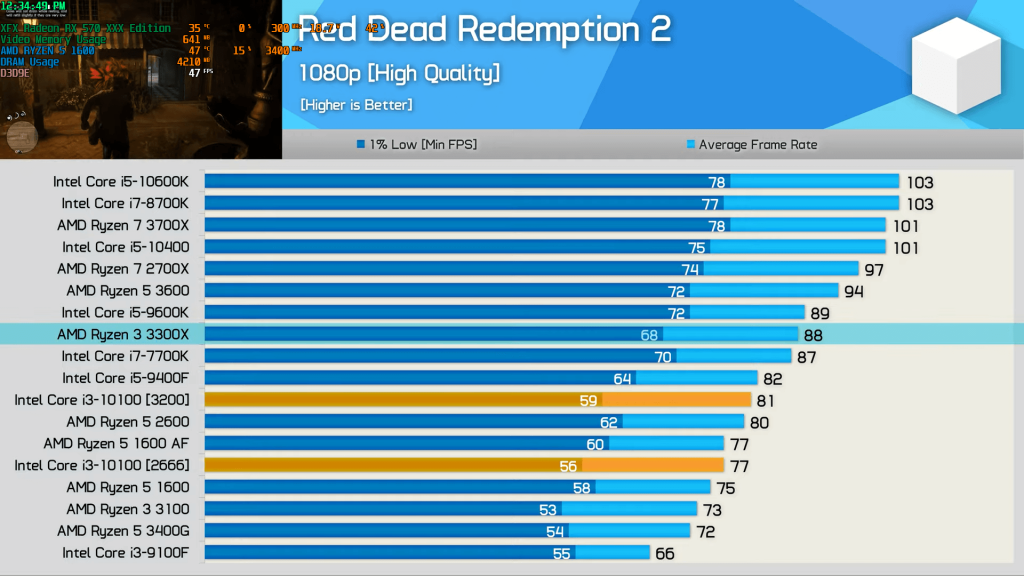 32nm) allows for more performance with less heat
32nm) allows for more performance with less heat - Higher frequency (1.8GHz vs. 1 second
- More cores (4 vs. 2) allows more processes to run simultaneously, speeding up computer performance and processing speed
- More L2 cache (2MB vs. 1MB) allows the processor to access data faster
- High internal video processor frequency: 800 MHz vs 350 MHz
Reasons to choose Intel Core i3 2367M
- High critical temperature (100°C vs 90°C) allows the processor to work in more severe temperature conditions
1 Features
Family
- Core
Compare - Core Core
Compare - Core
370
Compare - Core i3 M 390
Compare
Family
- A6-3400M APU
Compare - A6-3410MX APU
Compare
The speed in games
Core i3 M 380
34. 6
6
A6-3420M APU
35.3 (+2%)
Performance in games and similar applications, according to our tests.
The performance of 4 cores, if any, and performance per core has the greatest impact on the result, since most games do not fully use more than 4 cores.
The speed of caches and working with RAM is also important.
Speed in office use
Core i3 M 380
38.1 (+2.6%)
A6-3420M APU
37.1
Performance in day-to-day activities such as browsers and office applications.
The performance of 1 core has the greatest impact on the result, since most of these applications use only one, ignoring the rest.
Similarly, many professional applications such as various CADs ignore multi-threaded performance.
Speed in heavy applications
Core i3 M 380
17.6
A6-3420M APU
18.2 (+3.3%)
Performance in resource-intensive tasks loading a maximum of 8 cores.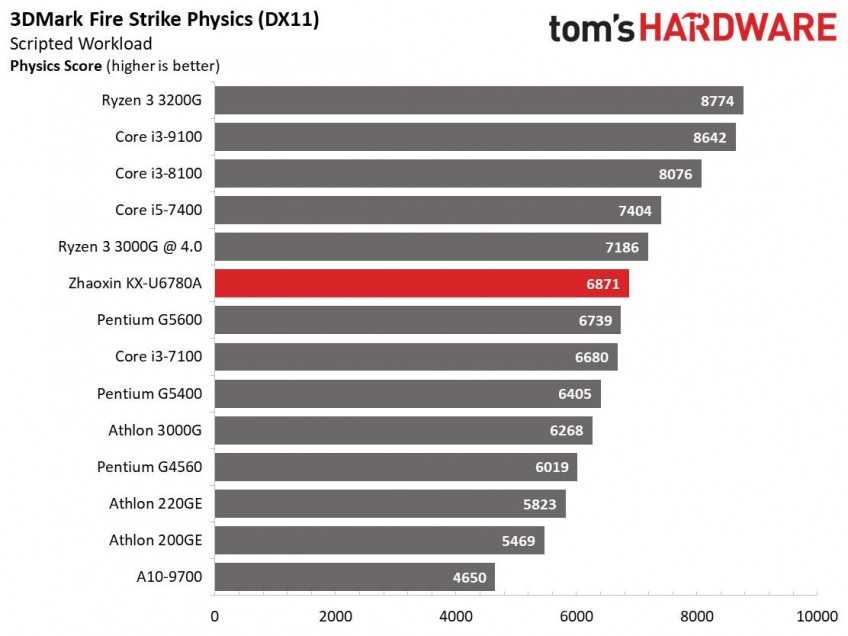
The performance of all cores and their number have the greatest impact on the result, since most of these applications willingly use all the cores and increase the speed accordingly.
At the same time, certain periods of work can be demanding on the performance of one or two cores, for example, applying filters in the editor.
Data obtained from tests by users who tested their systems with and without overclocking. Thus, you see the average values corresponding to the processor.
Speed of numerical operations
Simple household tasks |
|
Core i3 M 380 34.8 (+15.2%) A6-3420M APU 29.5 |
Demanding games and tasks |
|
Core i3 M 380 11.6 (+7.8%) A6-3420M APU 10. |
Extreme |
|
Core i3 M 380 2.3 (+8.7%) A6-3420M APU 2.1 |
Different tasks require different CPU strengths. A system with few fast cores and low memory latency will be fine for the vast majority of games, but will be inferior to a system with a lot of slow cores in a rendering scenario.
We believe that a minimum of 4/4 (4 physical cores and 4 threads) processor is suitable for a budget gaming PC. At the same time, some games can load it at 100%, slow down and freeze, and performing any tasks in the background will lead to a drop in FPS.
Ideally, the budget shopper should aim for a minimum of 4/8 and 6/6. A gamer with a big budget can choose between 6/12, 8/8 and 8/16. Processors with 10 and 12 cores can perform well in games with high frequency and fast memory, but are overkill for such tasks.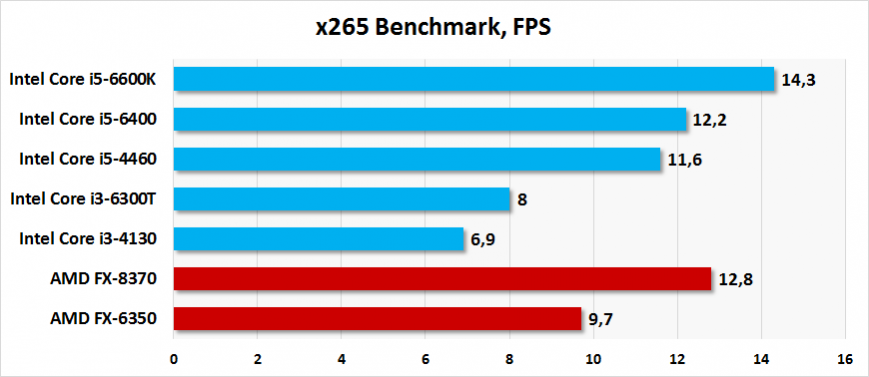 Also, buying for the future is a dubious undertaking, since in a few years many slow cores may not provide sufficient gaming performance.
Also, buying for the future is a dubious undertaking, since in a few years many slow cores may not provide sufficient gaming performance.
When choosing a processor for your work, consider how many cores your programs use. For example, photo and video editors can use 1-2 cores when working with filtering, and rendering or converting in the same editors already uses all threads.
Data obtained from tests by users who tested their systems both with overclocking (maximum value in the table) and without (minimum). A typical result is shown in the middle, the more filled in the color bar, the better the average result among all tested systems.
Characteristics
The data is not yet filled in, therefore the tables may lack information or existing functions may be omitted.
Basic
| Manufacturer | Intel | AMD |
DescriptionInformation about the processor, taken from the official website of the manufacturer. |
Intel® Core™ i3-380M Processor (3M Cache, 2.53 GHz) | |
| ArchitectureCode name for the microarchitecture generation. | Arrandale | |
| Process The manufacturing process, measured in nanometers. The smaller the technical process, the more perfect the technology, the lower the heat dissipation and power consumption. | 32 | No data |
| Release dateMonth and year of the processor’s availability. | 09-2016 | 09-2016 |
| Model Official name. | i3-380M | |
| Cores The number of physical cores. | 2 | 4 |
ThreadsNumber of threads.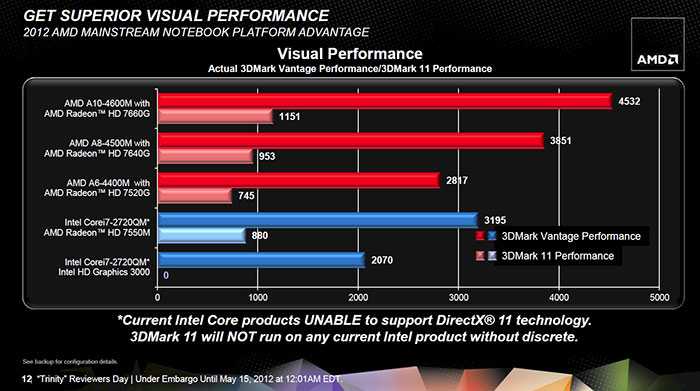 The number of logical processor cores that the operating system sees. The number of logical processor cores that the operating system sees. |
4 | 4 |
| Multi-Threading Technology With Intel’s Hyper-threading and AMD’s SMT technologies, one physical core is recognized by the operating system as two logical cores, thereby increasing processor performance in multi-threaded applications. | Hyper-threading (note that some games may not work well with Hyper-threading, you can disable the technology in the BIOS of the motherboard for maximum FPS). | Missing |
Base frequencyGuaranteed frequency of all processor cores at maximum load. Performance in single-threaded and multi-threaded applications and games depends on it. It is important to remember that speed and frequency are not directly related. For example, a new processor at a lower frequency may be faster than an old one at a higher one. |
2.53 GHz | 1.5 GHz |
| Turbo frequency The maximum frequency of one processor core in turbo mode. Manufacturers allow modern processors to independently increase the frequency of one or more cores under heavy load, due to which performance is noticeably increased. It may depend on the nature of the load, the number of loaded cores, temperature and the specified limits. Significantly affects the speed in games and applications that are demanding on the frequency of the CPU. | 2.5 GHz | 1.7 GHz |
| L3 cache size The third level cache acts as a buffer between the computer’s RAM and the processor’s level 2 cache. Used by all cores, the speed of information processing depends on the volume. | 3 | No data |
| Instructions | 64-bit | |
Extended instruction set Allows you to speed up calculations, processing and execution of certain operations. Also, some games require instruction support. Also, some games require instruction support. |
SSE4.1/4.2 | |
| Embedded Options Available Two enclosure versions. Standard and designed for mobile devices. In the second version, the processor can be soldered on the motherboard. | No | No |
| Bus frequency The speed of communication with the system. | 2.5 GT/s DMI | |
| Number of QPI links | ||
| TDPThermal Design Power is an indicator that determines the heat dissipation in standard operation. The cooler or water cooling system must be rated for a larger value. Remember that with a factory bus or manual overclocking, TDP increases significantly. | 35 | No data |
| Cooling system specifications |
Video core
Integrated graphics core Allows you to use your computer without a discrete graphics card.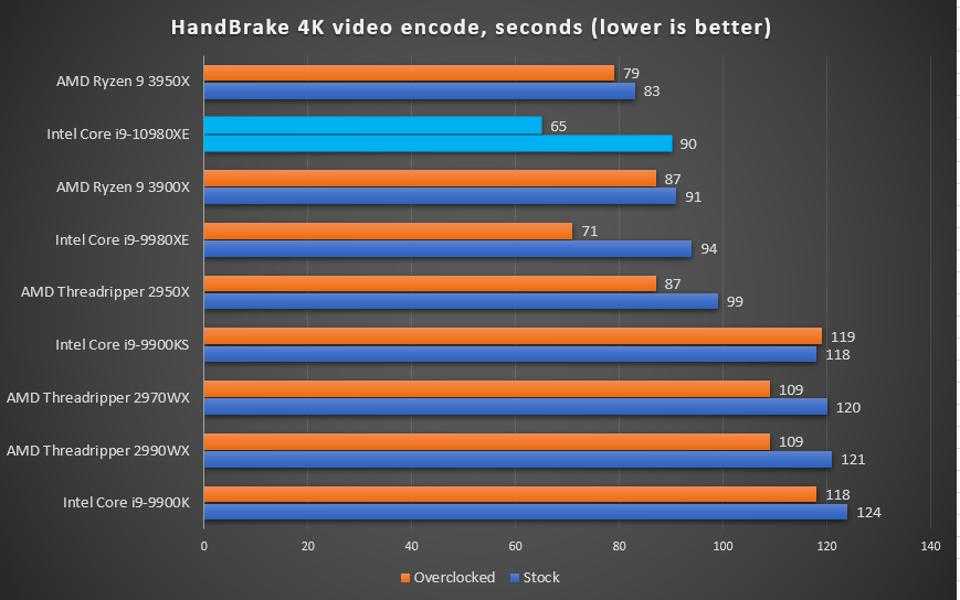 The monitor is connected to the video output on the motherboard. If earlier integrated graphics made it possible to simply work at a computer, today it can replace budget video accelerators and makes it possible to play most games at low settings. The monitor is connected to the video output on the motherboard. If earlier integrated graphics made it possible to simply work at a computer, today it can replace budget video accelerators and makes it possible to play most games at low settings. |
Intel® HD Graphics | |
| GPU base clockFrequency in 2D and idle. | 500 | No data |
| Max GPU ClockMaximum 3D clock. | 667 | No data |
| Intel® Wireless Display (Intel® WiDi) Supports Wireless Display technology using the Wi-Fi 802.11n standard. Thanks to it, a monitor or TV equipped with the same technology does not require a cable to connect. | ||
Supported monitorsThe maximum number of monitors that can be connected to the integrated video core at the same time.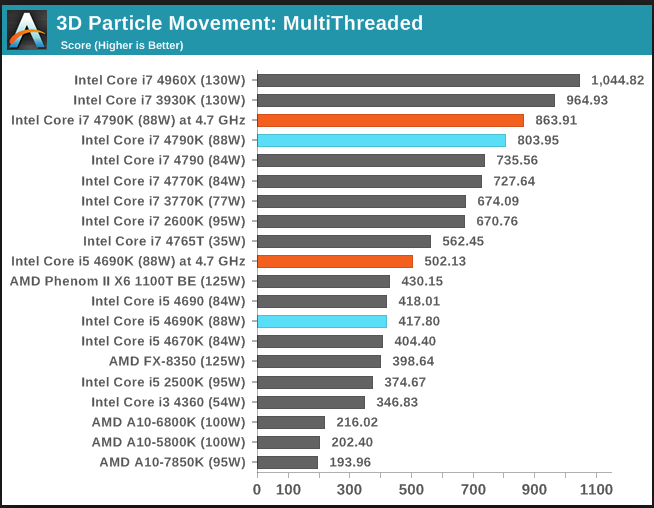 |
2 |
RAM
| Maximum amount of RAMThe amount of RAM that can be installed on the motherboard with this processor. | 8 | No data |
| Supported type of RAM The type of RAM determines its frequency and timings (speed), availability, price. | DDR3 800/1066 | |
| RAM Channels The multi-channel memory architecture increases data transfer speed. On desktop platforms, two-channel, three-channel and four-channel modes are available. | 2 | |
| Memory bandwidth | 17.1 GB/s | |
ECC memory Support for error-correcting memory, which is used in servers. Usually more expensive than usual and requires more expensive server components. However, second-hand server processors, Chinese motherboards and ECC memory sticks, which are sold relatively cheaply in China, have become widespread. Usually more expensive than usual and requires more expensive server components. However, second-hand server processors, Chinese motherboards and ECC memory sticks, which are sold relatively cheaply in China, have become widespread. |
No data | No data |
PCI
| PCI-E The computer bus version of PCI Express. The bandwidth and power limit depend on the version. There is backward compatibility. | 2 | No data |
| PCI configuration options | 1×16 | 1×16 |
| Number of PCI lanes | 16 | 1×16 |
Data Security
AES-NI The AES command set extension speeds up applications that use appropriate encryption. |
No data | No data |
| Intel® Secure Key An RDRAND instruction that allows you to create a high performance random number generator. | No data | No data |
Decoration
| Dimensions | No data | No data |
| Supported sockets | No data | No data |
| Maximum processors per motherboard | No data | No data |
Which one is better
Intel Core i3 M 380
- 1% faster in office applications and browsers.
- In complex multi-threaded applications, faster and outperforms by 0%.

- The base frequency is 1.03 GHz higher.
AMD A6-3420M APU
- On average, gaming performance is 1% better.
- $200 down
- The number of physical cores is 2 more.
Which processor is better in 2016 or a choice between AMD and Intel
The processor industry is no less dynamic than other areas of information technology. Although the constant improvements of the latest microarchitectures and the release of new ones did not make revolutionary breakthroughs at the beginning of 2016, they gave us a wider choice within certain classes of central processors.
Once again, we will discuss which of the processors is better — Intel or AMD , and also compare processors for a system for different tasks. I must say right away that the opinion in this article is subjective and can be both supported and refuted by any person and without consequences. In this article there will be no defense of one side or another, everything will be based on the real state of affairs of the world market for central processors.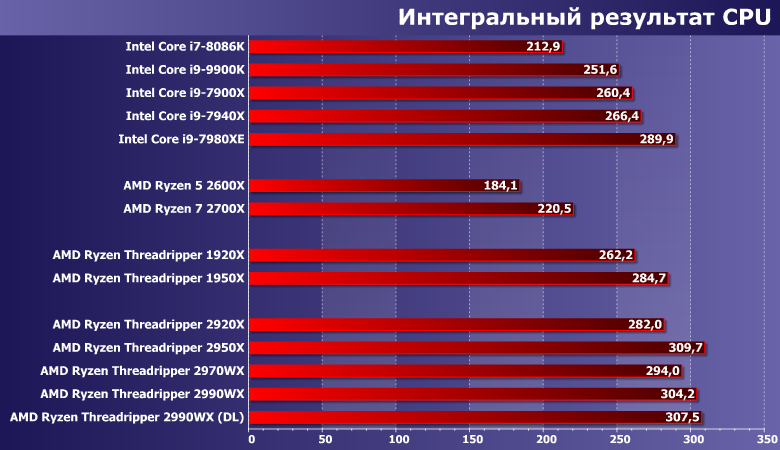
In addition, let’s touch on the segment of mobile solutions. Specific answers for systems for certain types of tasks will be given in the conclusions, I advise you to hold out and read to the end.
For convenience and fast transition, the content of the article is given:
- A small historical introduction
- MIFs about AMD
- General comparison of processors from AMD and Intel
- 6 which processor is better for the laptop which processor is better for the laptop results
- Processor for home system with undemanding tasks
- Processor for gaming computer
- Processor for demanding computing work
AMD vs Intel. A little historical introduction
So let’s go. Intel Corporation and Advanced Micro Devices were founded around the same time: in 1968 and 1969, respectively.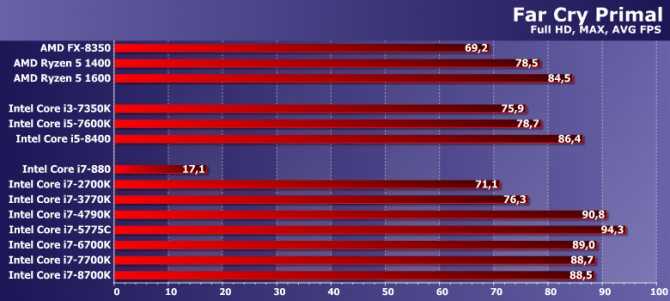 That is, both companies have vast experience both in the production of processors and in competition with each other. But for some reason, among ordinary «users» Intel is much more famous. And even in some antediluvian technical educational institutions they study in detail the old i8080 processor, which is sore for all technical students. AMD at that time just released 8080 clones in the form of Am9 processors080. And the first successful AMD processor of its own design can be called the Am2900 processor.
That is, both companies have vast experience both in the production of processors and in competition with each other. But for some reason, among ordinary «users» Intel is much more famous. And even in some antediluvian technical educational institutions they study in detail the old i8080 processor, which is sore for all technical students. AMD at that time just released 8080 clones in the form of Am9 processors080. And the first successful AMD processor of its own design can be called the Am2900 processor.
Okay, let’s not talk about sad old processors with a frequency of 3 MHz, made according to the 6 micron process technology and equipped with an 8-bit data bus. And better, we will slowly move directly to the topic of our discussion, and to modern processors with more joyful characteristics.
Myths about AMD
I would like to immediately dispel the myths about «burning» and «not subject to» overclocking AMD processors. To date, such statements are based on «naked» rumors. About ten years ago, there were many cases of Athlon 1400-type processors failing, which simply burned out after the cooler that cooled the processor heatsink failed. Yes, it was relevant then, but talking about it when it’s 2015 and AMD processors are equipped with excellent thermal protection technology is simply blasphemy.
About ten years ago, there were many cases of Athlon 1400-type processors failing, which simply burned out after the cooler that cooled the processor heatsink failed. Yes, it was relevant then, but talking about it when it’s 2015 and AMD processors are equipped with excellent thermal protection technology is simply blasphemy.
Yes, and the thermal regime depends on various factors, and not only on the processor itself, for example, the efficiency of the processor cooler, as well as the quality of thermal paste application, can be factors of influence. I will not talk much about overclocking and give specific processor models, but simply state the fact that there are processors from the Black Edition series on sale, which are focused on overclocking by the manufacturer. It is the same with AMD’s new FX, they not only proved to be suitable for good overclocking, but also boast world records in overclocking.
The negative myths about AMD are over, now we can think about Intel. It seems that there were no negative myths about Intel. In those days when the Athlones «burned», one could only hear flattering reviews about the Pentium. This processor was known and revered by many, and even now to the question: “What kind of computer do you have?”. Sometimes you can hear a proud answer — «Pentium».
It seems that there were no negative myths about Intel. In those days when the Athlones «burned», one could only hear flattering reviews about the Pentium. This processor was known and revered by many, and even now to the question: “What kind of computer do you have?”. Sometimes you can hear a proud answer — «Pentium».
2016 Comparison of the main lines of processors from AMD and Intel
I will sharply declare that as of 2016, among AMD and Intel, one can confidently single out the clear leader in the processor hit parade. And based on this article, you will be able to choose and buy a processor, really, taking into account all the needs. If, in the article which video card is better, we could not single out a large-scale leader, then everything is a little clearer here. But this leader will be voiced with rather generalized notes, since no one has canceled the specifics of the working and budgetary spheres, but more on that later.
In this subsection of the article, we will go through the main processor lines from the two companies and analyze their performance under various types of loads, and already in the conclusions, as promised, recommendations will be given for choosing a processor for certain tasks.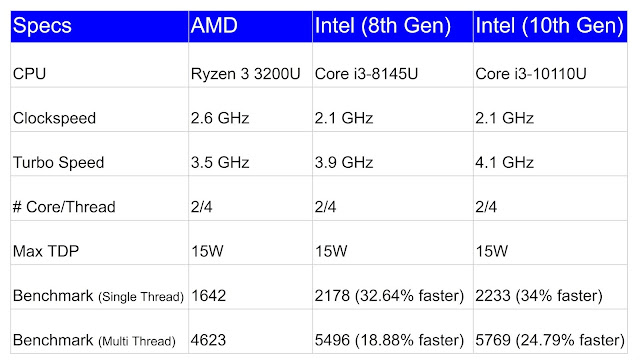 Accordingly, taking into account specific tasks, the advantage of certain processors will change significantly.
Accordingly, taking into account specific tasks, the advantage of certain processors will change significantly.
The description and resolution of the dilemma «which is better: amd or intel» should be approached comprehensively and from different viewing angles, because an ordinary consumer needs one thing, and an avid gamer or overclocker needs something completely different. I must say right away that the answer will be dynamic, and I will try to update the article as radically new processor lines from both companies are born, because this year one is leading, and the next — the other.
Let’s start a little afar. When Intel quietly and peacefully continued to release good and high-quality processors, the AMD Athlon 64 line with a modified K8 microarchitecture was born. It was after the appearance of these processors that many started talking about AMD, and many even moved out of Intel at that time. A few years ago, there were more or less equal «battles» of Phenom processors on K10 with the corresponding Core 2 Duo and Core 2 Quad models from Intel. During these periods, a widespread opinion appeared that AMD processors in the middle and budget price range surpass Intel in terms of price / quality ratio. For AMD, everything seemed to be going very, very well, but then the Nehalem microarchitecture appeared, which dealt a significant blow to AMD and revolutionized the processor market.
During these periods, a widespread opinion appeared that AMD processors in the middle and budget price range surpass Intel in terms of price / quality ratio. For AMD, everything seemed to be going very, very well, but then the Nehalem microarchitecture appeared, which dealt a significant blow to AMD and revolutionized the processor market.
Core i3/i5/i7 on Sandy Bridge began to be actively bought up, raising Intel higher and higher over AMD. A little later, Intel turned the heat on the fire, releasing second-generation Sandy Bridge processors. They turned out to be no less successful than their predecessors: many liked the i5-2400, 2500, i7-2700, and for good reason. We will not delve into the microarchitecture, I will only say that Intel developers have improved it well, adding many different technologies and features.
It didn’t take long for Intel to announce its third-generation Ivy Bridge processors. The intel core i5-3570K, i7-3770K and many others processors did not go unnoticed, although they cannot boast of significant improvements. But given the fact that prices for Ivy and Sandy Bridge are not separated by an abyss, it would be more reasonable to buy a slightly honed Ivy Bridge.
But given the fact that prices for Ivy and Sandy Bridge are not separated by an abyss, it would be more reasonable to buy a slightly honed Ivy Bridge.
What did AMD do at that time? AMD calmly continues to refine the K10 microarchitecture, slowly adding frequencies to the Phenom. Although AMD Phenom II 9 processorsxx look very good on the processor market, due to their capabilities and prices, but they are already obsolete and it is quite difficult for them to compete with new products from Intel.
Then AMD’s Llano line of hybrid processors is announced with an emphasis on integrated graphics right on the processor chip. The decision is quite interesting, given that the Llano graphics perform well, but in the computational tests, these hybrid chips perform like a dual-core Intel Core i3-2100. Some variant of saving on a video card will be to their taste, especially since the savings are significant and Llano processors will be marked by us in the results as an interesting budget option. In addition, a newer line of A-series processors has been released — these are Trinity processors, they offer more powerful graphics than Llano, which looks even more tasty for entry-level home systems. Trinity graphics are rightfully considered the best in the world among processors integrated on a chip.
In addition, a newer line of A-series processors has been released — these are Trinity processors, they offer more powerful graphics than Llano, which looks even more tasty for entry-level home systems. Trinity graphics are rightfully considered the best in the world among processors integrated on a chip.
Things didn’t go well in the top segment. Everyone was looking forward to the enchanting departure of the legendary processors based on the Bulldozer architecture. Everyone was waiting for a revolution in the processor market, but instead a raw 8-core product was born. In addition, these 8 cores are not quite complete, since the developers combined every two cores in the Bulldozer microarchitecture into 1 module, which can be compared (conditionally) with one core of Ivy Bridge processors. But once again I emphasize that this comparison is very conditional, since depending on the types of tasks, this very convention can be broken to smithereens both in favor of Intel and AMD.
Then the Bulldozer revision was announced — Vishera processors with Piledriver microarchitecture — which, according to AMD representatives, gives an increase in the region of 10-15%, while having a lower TDP and reinforcing all this with a very tempting price.
Of course, it should be noted that both Bulldozer processors and, in particular, their improved version — Vishera — show excellent results under multi-threaded load, this is clearly seen in the working tests of 3d max:
Less is more
The FX8350 beats the i7-3770K. Approximately the same situation will be observed in all applications that can create 8 high-quality threads, that is, in most graphics packages, as well as in any other types of complex calculations. If you analyze the results, you can see that the gap from the i7-3770K is insignificant, but given the approximate prices of these models — $340 for the i7-3770K and $209 for the FX-8350, I think questions about a more profitable processor for these types of tasks should be taken off. Also, the even cheaper FX-8320 will be of interest for these tasks.
But when a single-threaded load falls on the processor, then due to the same unfinished microarchitecture, the bulldozer often loses to opponents from Intel. Those same games usually can’t load more than four cores, which as a result exposes the shortcomings of the Bulldozer cores individually. AMD Vishera processors corrected the situation a little, but the lag is still noticeable. For clarity, here are some game tests:
Of course, the gaming load falls on the video card to a greater extent, but the processor is an equally important link here. Moreover, games that are quite demanding on processor resources often skip.
The selection of the above tests is too small, but the general trend of test results both on domestic and foreign sites is exactly the same: the tests clearly show that the i5-3570K confidently outperforms opponents from AMD in the face of the new FX-4300, FX-6300 and FX- 8350.
Already since 2015, the Sunnywell company AMD, on which there were practically no hopes in terms of innovations, of course, announced the introduction of a new line, referred to as Carrizo. Representatives agreed that Carizzo is the sixth generation, but why the little-known Brazos is not taken into account is not clear. Anyway, it is worth highlighting the following points of this sensational line, presented in Germany.
- Carizzo resides exclusively on one chip, while before that the southbridge and graphics chip were located on two chips. The functionality of the device is based on 28 nanometers using the Global Foundries process.
- Four cores have an Excavator architecture. The processor frequency was raised by only 1 MHz compared to the previous Steamroller, so the data processing performance per core, alas, increased slightly, but in general, everything is not so bad — an increase of around 15%, while maintaining the previous data processing principles in general .
- The graphics side has also been updated. In particular, the graphics core received 512 KB of L2 memory. There are significant performance improvements when matching with tessellation, and most importantly, color reproduction is lossless.
At the same time, Intel did not stint on the creation and release of a new generation of processors, which were called Broadwell. And it is worth noting right away that every fan of the Intel team was upset. The processor is based on Haswell, made according to the 14-nm process technology. The functionality of the cores and the microarchitecture did not receive any changes, so the desktop Broadwell turned out, to put it mildly, not well.
One of the advantages is the reduction of heat generation. An integrated graphics core Iris Pro 6200 has also been added. This is, perhaps, all the main important additions to the processor from Intel.
But if we consider in general, for most games, then AMD processors also feel quite good.
In these tests, the main thing for us is not the FPS specifics of the two games, but the general trend of the FX processors lagging behind in games. In the conclusions, we will note this fact, which will go to AMD’s liability.
Notebook CPUs
Intel has been reigning in the notebook processor segment for quite a long time, and reigning very thoroughly. In laptops, both budget and top-class, Core ix processors flaunt, which we praised a little higher.
The release of Llano processors did not change the balance of power very much, but brought some variety to the budget notebook segment. But the Trinity processors can be called a really good attack from AMD. Even more powerful integrated graphics at an affordable price, plus these processors support Dual Graphics technology. This technology allows the integrated graphics of Trinity processors to work in conjunction with a discrete adapter. As a result, the «integrated Trinty graphics + discrete Radeon HD 7670M» bundle looks very attractive, given the overall graphics performance and low cost.
We can safely say that in the budget segment of laptops, AMD Trinity A4 and A6 series are very interesting for the buyer, as they guarantee more powerful graphics than integrated graphics in Intel processors.
In the mid-range mobile segment, the A10 processors paired with the HD 7670 will also please with their graphics performance. But already in the fight against certain Core i5, they will have problems on the computing front. With all this, the middle class of laptops remains subject to fierce competition, and many will opt for the A10 + HD 7670. So in the middle and budget segment, it is not so easy to determine which processor is best for a laptop.
Returning to the same Carrizo from AMD, which was released in 2015, it is worth noting that the system already has an integrated UVD-6 video decoder. Thanks to this decoder, it became possible to view video in H.264 and H.265 formats. As stated by the manufacturers of Carrizo, this is the world’s first laptop chip, which is subject to H. 265 decoding.
Intel is also on the alert when it comes to laptop graphics, but it’s far behind AMD, no matter how strange it may sound. So, a test was conducted in which Carrizo from AMD and Broadwell from Intel competed, playing 4-K video in HEVC format. The results were stunning, when playing video, a laptop with AMD-shny Carrizo did not even load the processor even half, while its competitor Inrel was loaded at 80, and sometimes 100%.
Thus, if back in 2013 Intel was in the lead, then the situation for 2015 has changed somewhat, and now a self-respecting user will prefer a laptop with higher graphics performance running Carrizo processors from AMD.
I would like to point out that purchasing a high-performance laptop is a very controversial thing, I advise you to read the article «laptop or desktop PC», which will not let you stumble on this deceptive front.
Okay, let’s not get hung up on laptop processors, but rather let’s move on to conclusions.
AMD and Intel.
Which processors are better? Conclusions
It remains to sum up the small results in the battle between AMD and Intel. From the last of the above, everything becomes clear, but let’s judge objectively, because everyone has the right to make a mistake, and we will believe that this mistake will be worked out. Let’s pay attention to the class of tasks performed by these processors in order to fully judge in the end.
Processor for a budget system with undemanding tasks
To begin with, let’s answer what is better than amd or intel in the budget segment of the market. Budget systems are quite widespread. It can be both home computers and office systems, where the boss is trying to buy a fleet of machines for the price of a configuration of one normal system.
Here, it seems to me, it is worth giving the advantage to AMD. The same new Trinity, such as the $50-60 A4-5300, will look great in budget home systems, especially when trying to load the system with graphical tasks such as games. Well, or at worst, you can complete the system with the cheapest Llano, for $40.
For an office fleet of machines, Trinity will also be a good solution, but here they are squeezed by Pentium G, as in computing tasks they show a higher level of performance due to the second-generation Sandy Bridge architecture and a slightly larger cache memory.
AMD Carrizo 2015 will be an excellent solution not only for home use, but may well take pride of place among office machines. But AMD’s main goal was to release a completely new processor that would satisfy the needs of laptop functionality.
The Intel company with Broadwell, which has become the «unloved child», is largely losing ground to AMD-shnikam. So, in particular, although Broadwell is stuffed with a powerful graphics core Iris Pro 6200, but the functionality at the level of office calculations leaves much to be desired. Broadwell is not far from Sandy Bridge, who really coped with computing tasks at the proper level.
So for an office fleet, a good choice would be the budget Intel Pentium G processor on Sandy Bridge, released in 2013, or the new 2015 Carrizo work from AMD.
Processor for gaming computer
The class of gaming computers is the most comprehensive, because it covers like an average? as well as the top segment of processors, there is no longer a place for integrated graphics, and systems are usually equipped with high-performance video cards, which just do the bulk of the work in games. But a lot also depends on the processor, since no one has canceled the balance in the system.
From the previously analyzed test results, we can confidently say that an average gaming system needs Intel. If you are not sorry to overpay a little, and at the same time you want to get a certain reserve for the next year or two in most games, then the Core i5 on Ivy Bridge in most cases will be the best option than any of the Vishera. By no means do I want to say that Vishera is absolutely not suitable for games. Due to its price, the same FX-6300 will be a very good option for an inexpensive gaming system, although the Core i3 is running out of it here.
But the championship for gaming loads and a home system like “for all tasks” is still for the Core i5, as a mainstream version, you can call the Core i5-3570 or i5-3470. In particularly extreme gaming scenarios, an even more advanced solution would be the Core i7, but at this stage in the development of the gaming industry and the classic use case, its performance is excessive in most cases.
So for a good gaming system, Intel core i5 is recommended (in some cases i7), and for a cheaper gaming system, the FX-6300 is not bad — here you already need to look at secondary tasks and, starting from them, give preference to one or another option.
Processor for intensive computing work
Video/audio processing and encoding, work in complex graphics applications, and any other type of complex computing work or work in entry-level servers — all this can often be divided into many threads.
As we said earlier, multithreading is the strong point of the FX-8350. With its low cost, this processor shows the level of i7-3770K, and sometimes bypasses it in the above types of tasks. Therefore, for workloads, if you do not want to spend extra money, only the FX-8350.
Of course, if there are extra funds, then you can overpay and get a universal i7-3770K, both for work and for games, which will also be a reasonable option, but still according to the well-known price / performance ratio for complex computing tasks FX-8350 confidently overtakes opponents from Intel.
Also, do not forget about the «hard solution» from Intel, in the form of the same Core i7-3970X. This processor is the best option among the desktop ones: it can do everything and is better than everyone else, but there is only one thing it cannot do — be cheap, its cost is about $1000. The perfect extreme option for those who like to throw money.
The processor options given here for different types of tasks are very general and may not accurately reflect each individual case, where secondary, but no less important tasks may occur, and the purchase budget may also have a significant impact.
If we talk about the financial side of the issue, then the AMD-shny Carrizo processor is included in the price range from 350 to 750 US dollars, which is due to the category of application. Accordingly, laptop processors are relatively more expensive than desktop processors, so again you have to choose according to the accumulated budget. But it is only worth noting that Carrizo, based on eight graphics and four processor cores, in addition has a technology for optimizing 15 W power supply. Thanks to this, the new device works 2.4 times faster than the previous generation Kaveri.
The minimum cost of 2015 Intel processors is $380, which does not at all correspond to the parameters that are inherent in Broadwell. In particular, the graphics core of the latest generation Iris Pro 6200 determined the main role in terms of cost; in a slightly improved microarchitecture, which simply improved the Haswell predecessor, as well as a high rate of heat reduction. And this, perhaps, is all that Intel can boast about its latest work.
Here is a comparison of processors and the answer to the question: “Which processors are better, Intel or AMD?”
Perhaps there are some controversial points, I will be very happy with your corrections or additions in the comments, but without a holivar and offensive bias.
Finally, let’s wish AMD to pleasantly surprise us with the Streamroller microarchitecture soon, and also try to give a worthy rebuff to Intel, because we don’t need a monopoly and inflated prices.
We wish Intel to lower prices for their processors and continue to produce the same good, powerful and high-quality products.
And to you, dear friends, I wish stable operation of the «hearts» of your computers, regardless of who and when they were released. All the best!
Processor AMD A6 6310 — characteristics, tests, reviews
As usual, it was not easy to get new processors for tests. AMD did not have older versions, so we had to test the A6-3650, equipped with four 2. 6 GHz cores, 4 MB L2 cache and a Radeon HD 6530D video card. As competitors, he was taken equal in price to the Intel Core i3-2100. It works with only two cores, but at a frequency of 3.1 GHz. Integrated Graphics — Intel HD Graphics 2000 with six stream processors.
The test stand for both platforms was assembled with two Kingston HyperX DDR3-1666 memory sticks of 2 GB each and a discrete Radeon HD 5870 video card. -USB3.
Specifications AMD A6 6310
General parameters
| Clock frequency | 1.8 GHz |
| Maximum clock frequency | 5 2.40003
We launch the HWiNFO program and go to the menu with sensor readings (Sensors) — here we are interested in the processor temperature (CPU (Tctl / Tdie)) and the power section (VRM). In Prime95, we select the Small FFT mode, which will start to heavily load the processor and check its stability. Leave the test for at least an hour (preferably several hours to be sure). It is also worth monitoring the temperature of the processor and the power unit so that it does not exceed 100 degrees Celsius (the limit value, exceeding which can cause a decrease in clock speeds and a drop in performance). If the temperature is too high, reduce the time and supply voltage. If there are no stability problems, and the processor and board maintained optimal operating temperatures, we check the performance after overclocking. Later you can try to increase the values even more. The most interesting thing began when we removed the discrete graphics card from the test stand. To begin with, we note that the computing units did not respond to the lack of a powerful board. The difference of 1% in synthetics and applications can be attributed to the error. But the competition between integrated graphics cores turned out to be exciting. The situation is similar with Devil May Cry 4. While the Core i3-2100 got to 10.2 fps, the A6-3650 raised the bar to a quite playable 29.1 fps. Compare scores on Aliens vs. Predator failed. Only the AMD core can work with DX11, which showed 8.4 fps. As we expected, the new AMD processors turned out to be rather weak when working with simple applications. But they surpassed Intel by a head in terms of integrated graphics. Llano is a device unique to the computer market. On these crystals, you can build an HTPC or an entry-level gaming system. And when the money appears, buy a budget video card and get an increase in fps. How successful the Fusion concept will be, only time will tell. Now we can only say one thing: after five years, the idea has finally become a reality and really works. |
| Core i7 4550U | 2,970,000 MB/s |
| Core i3 4010U | 2,175,000 MB/s |
PassMark
| A6 6310 | 2,414 |
| Core i7 4550U | 3,807 |
| Core i3 4010U | 2,443 |
PassMark (Single Core)
| A6 6310 | 841 |
| Core i7 4550U | 1,568 |
| Memory | |
| Intel Core i3-2100 | 9997 |
| Intel Core i3-2100 + HD Graphics | 9831 |
| AMD A6-3650 | 5475 |
| AMD A6-3650 + Radeon HD 6530D | 5448 |
| HDD | |
| Intel Core i3-2100 | 5267 |
| Intel Core i3-2100 + HD Graphics | 82% |
3DMark Vantage
| GPU | |||||||||
| Intel Core i3-2100 | 18 129 | ||||||||
| Intel Core i3-2100 + HD Graphics | — | ||||||||
| AMD A6-3650 | 14 895 | ||||||||
| AMD A6-3650 + Radeon HD 6530D | 2469 | ||||||||
| CPU | |||||||||
| Intel Core i3-2100 | 10 133 | ||||||||
| Intel Core i3-2100 + HD Graphics | — | ||||||||
| AMD A6-3650 | 8891 | ||||||||
| AMD A6-3650 + Radeon HD 6530D | 8903 | ||||||||
| Overall | |||||||||
| Intel Core i3-2100 | 15 142 | ||||||||
| Intel Core i3-2100 + HD Graphics | — | ||||||||
| AMD A6-3650 | 12 714 | ||||||||
| x1 | |||||||||
| Intel Core i3-2100 | 1,25 | ||||||||
| Intel Core i3-2100 + HD Graphics | 1,27 | ||||||||
| AMD A6-3650 | 0, 79 | ||||||||
| AMD A6-3650 + Radeon HD 6530D | 0,8 | ||||||||
| xN | |||||||||
| Intel Core i3-2100 | 3,02 | ||||||||
| Intel Core i3-2100 + HD Graphics | 3,21 | ||||||||
| AMD A6-3650 | 3,11 | ||||||||
| AMD A6-3650 + Radeon HD 6530D | 3,12 | ||||||||
| Multi | |||||||||
| Intel Core i3 -2100 | 2,42 | ||||||||
| Intel Core i3-2100 + HD Graphics | 2,52 | ||||||||
| AMD A6-3650 | 3,93 | ||||||||
| AMD A6-3650 + Radeon HD 6530D | 3. |
930 / | |||||||
| Intel Core i3-2100 + HD Graphics | 914 / | ||||||||
| AMD A6-3650 | 618 / | ||||||||
| AMD A6-3650 + Radeon HD 6530D | 614 / | ||||||||
| AMD Athlon II X4 631 | 719 / | ||||||||
| xN | |||||||||
| Intel Core i3-2100 | 2162 / | ||||||||
Intel Core i3-2100 + HD Graphics
Tags:1.8 GHz, 15W, A6 6310, AMD, CPU Synthetic testsThe need to test a computer processor appears in the case of overclocking or comparing characteristics with other models. The built-in tools of the operating system do not allow this, so you need to use third-party software. Popular representatives of such software offer a choice of several analysis options. Four 64-bit computing modules based on the Beema architecture are implemented in the A6-6310. At the level of system and application software, this CPU processes information into all the same 4 data streams, and in this case there can be no talk of supporting some kind of logical multitasking technology. A kind of compensation for the lack of the latter is the support for TurboCore technology. The chip in question must be installed in an FT3 BGA processor socket. In some cases, to reduce costs, manufacturers abandon the socket and solder the processor directly on the motherboard. This, indeed, allows you to minimize the cost of production. On the other hand, this approach excludes the modernization or repair of the computer system. Specifications
Integrated graphics One of the biggest pluses is the integrated graphics subsystem in the AMD A6-6310. Cache organization and size The AMD A6-6310 processor has only 2 cache levels. Increased requirements for energy efficiency and minimum power consumption left the developers essentially no choice in this case. The total size of the first of them is 256 KB. At the same time, 128 KB can store only data, and the remaining 128 KB can store program code instructions. The second level is not endowed with such a complex organization, and it can store both data and instructions. OverclockingOne of the parameters traditionally studied in processors is the overclocking potential. As you remember, AMD products often stood out for their “tendency” for overclocking, and we will try to evaluate the possible performance increase as a result of this. As a result of increasing the frequency of the reference bus by 40 MHz, we managed to overclock the hybrid processor to 3640 MHz. Such a procedure did not affect the stability of the system, as evidenced by the error-free operation of LinX. However, to achieve this stability, the AMD APU A6-3650 core voltage was increased to 1.536 V, and therefore we recommend that you first purchase a more efficient cooling system before overclocking. 9,71 |
|||||||||
| CrystalMark | ALU | 41598 | 55802 | 34,15 | |||||
| FPU | 43989 | 55341 | 25,81 | ||||||
| Memory | 28636 | 33562 | 17. |
||||||
| Winrar, KB/S | 1530 | 1732 | 13.20 | ||||||
| FUTUREMARK’06 | MARK SCORE |
5 51278 | 6423 | 1,07 | |||||
| CPU Score | 3612 | 45127 | 25.06 | ||||||
Medium production growth has compiled 21.16%. It is easy to see that the ALU turned out to be the most sensitive element of the hybrid processor, the performance of which directly depends on the clock frequency. This fact is likely to please buyers who are assembling a relatively inexpensive system to perform engineering calculations.
Price
The most affordable AMD A6-6310-based computer systems from leading manufacturers can be purchased for $180-$200. Moreover, this price is valid for netbooks or ultra-budget class laptops, as well as for mini-PCs. You can, of course, pay attention to more affordable computing systems based on such a chip from less well-known manufacturers, but in this case, the build quality of a personal computer may significantly deteriorate.

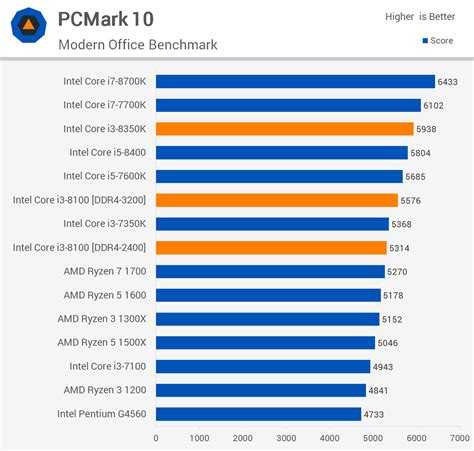 7
7